Cappadocia is a region where both the landscape and the cultural history are unique; each has been shaped by the other in a symbiotic way. The region has an incredibly long history, forming the heartland of one of the earliest Empires in history, that of the Hittites, and later becoming a refuge for the early Christians in the first centuries AD. Although the caves and rock dwelling have been in use for millennia, it is these early Christians that have made the strongest mark on the landscape. Just outside our base town of Goreme is the Open Air Museum, perhaps the most famous collection of early churches, monasteries and houses carved out of the soft rock cliffsides.
The enclosed churches are not for claustrophobics, but hold the remains of impressive frescoes. The earlier, ochre red simple designs date from the 9th Century, while the full colour frescoes are from the post-Iconoclastic 11th Century and later.
There’s also a number of functional buildings; houses, kitchens, and communal dining rooms.
The town of Goreme itself is a fascinating place to wander, filled with fairy chimneys (the tall, rock-tipped pillars), houses backing into the cliffside,
One of the most common sights in Turkey is that of the Evil Eye. The glass beads in blue and white are meant to ward against malevolent spirits, and can be seen on every house and business (even away from the touristy areas!).
We perched atop the nearby ridgeline and watched the sun light the rock formations in a slowly shifting colour palette.
The next morning, we arose at some ungodly hour to participate in Cappadocia’s most famous tourist activity – a sunrise hot-air balloon ride. The gloom is punctuated by the huge bursts of fire that inflate the balloons, making them seem like enormous lightglobes.
Then it’s up, up and away, as the predawn light begins to build.
As the sun finally pierces the horizon, the ground sharpens, allowing you to see every contour of the landscape.
Safely back on the ground, our next exploration was to the Zelve Open Air Museum a few kilometres away. Here is more of a local village (instead of a religious agglomeration), and was in fact still inhabited until the 1950’s.
Further south of Goreme is the underground city of Derinkuyu – the largest out of several of such in the region. Here, instead of being carved out of the side of cliffs or fairy chimneys, an entire town’s worth of chambers was carved out underground, reaching down to 60 metres in depth. It was built primarily to shelter the town during raids and wars, with self-sufficient water sources, ventilation shafts and even space for livestock. Again, not recommended for claustrophobics or even tall people (I hit my head several times).
These round stone doors could only be opened from the inside and weighed several hundred kilos.
The last place we visited in the region was the Ilhara Valley, a river gorge containing many more cliffside cave houses and churches.
It’s a beautiful nature walk along the river’s burbling waters, even without the history to explore.
The caves here contain a number of churches that have vivid frescoes dating back to Byzantine times (10th – 11th Century AD), preserved by their obscurity in the bottom of the canyon. Sadly, many have still been defaced, either in the Iconoclastic period of more modern graffiti.
We wound our way home through the tiny scattered villages as dusk fell.

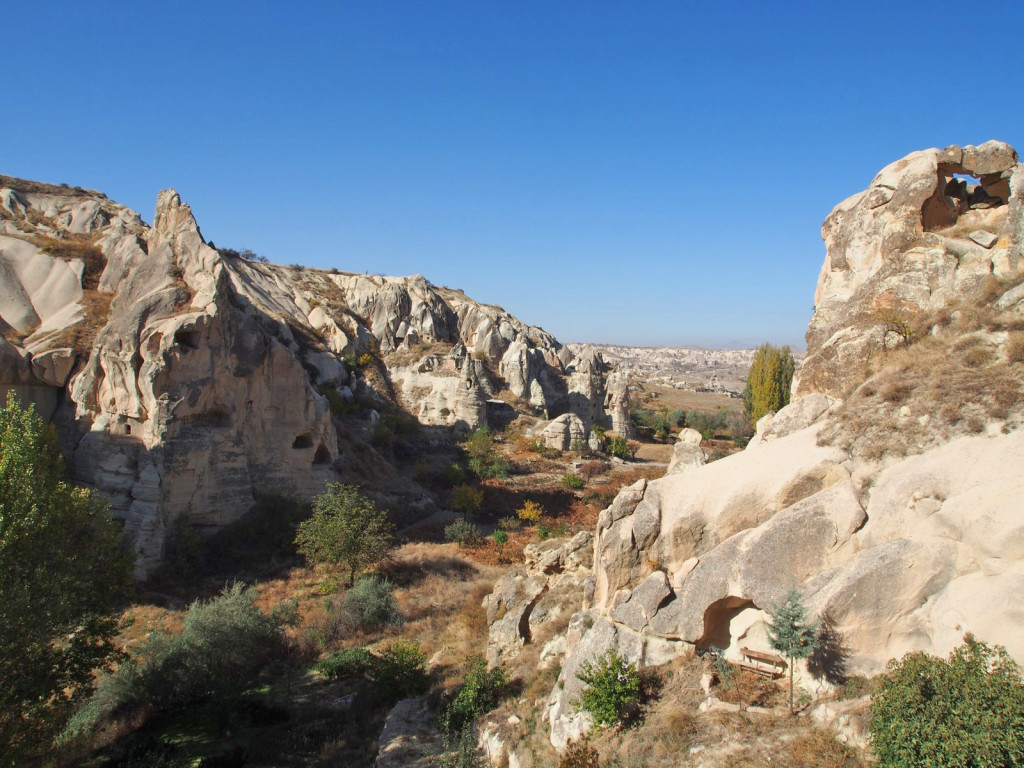
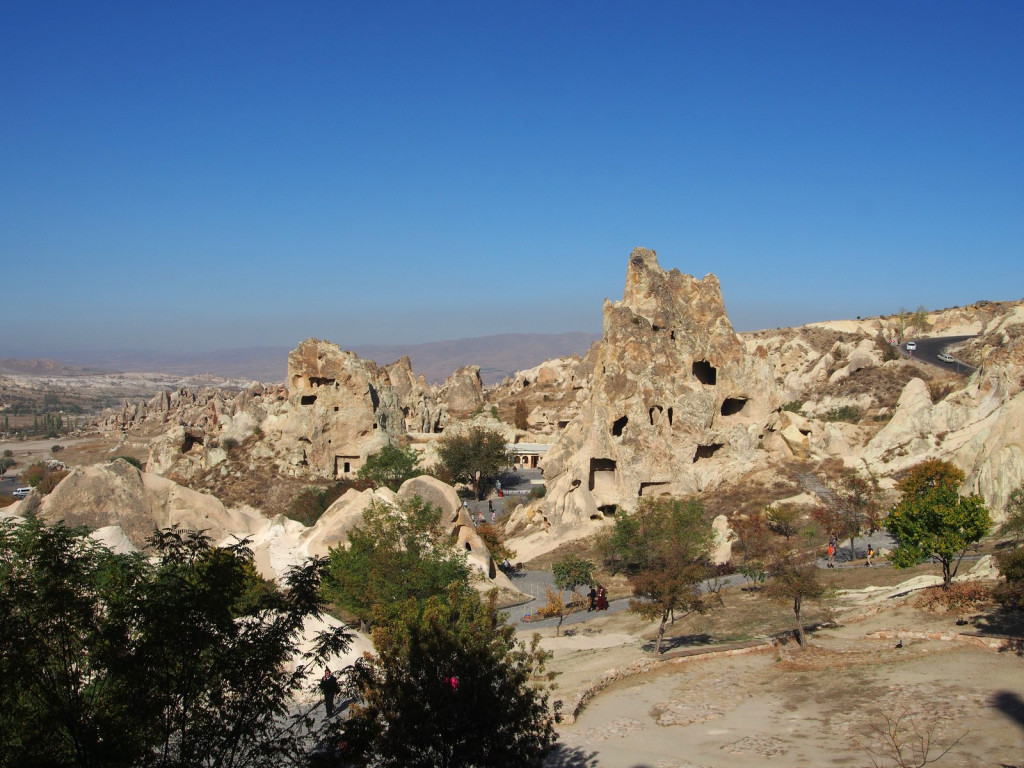
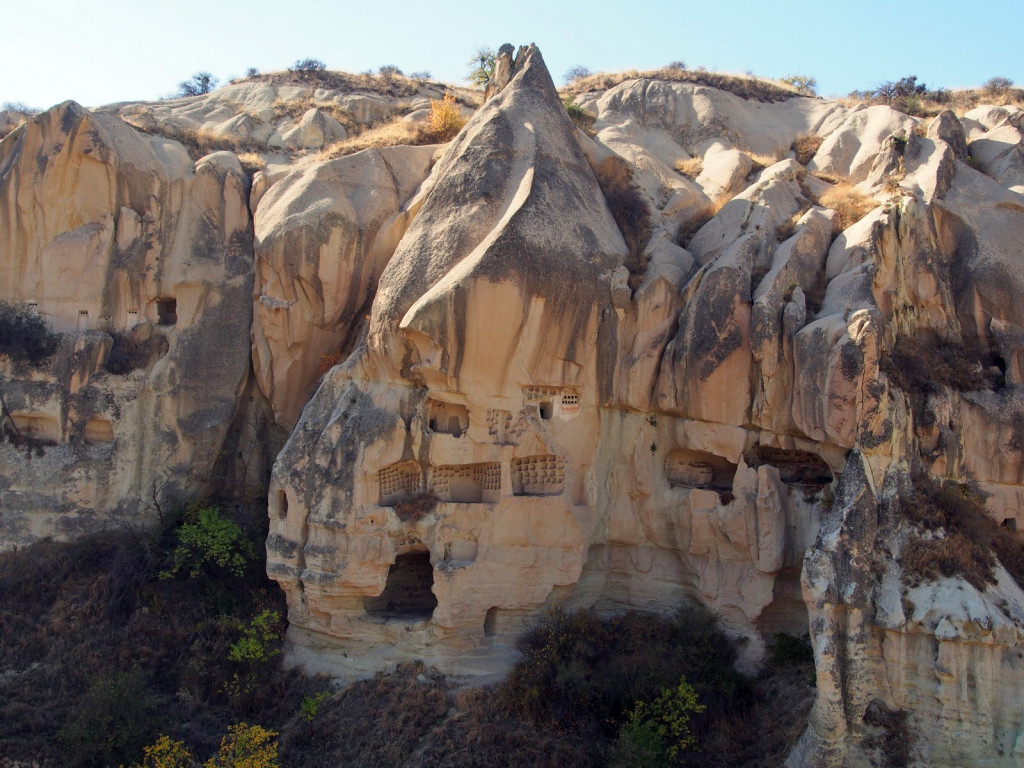
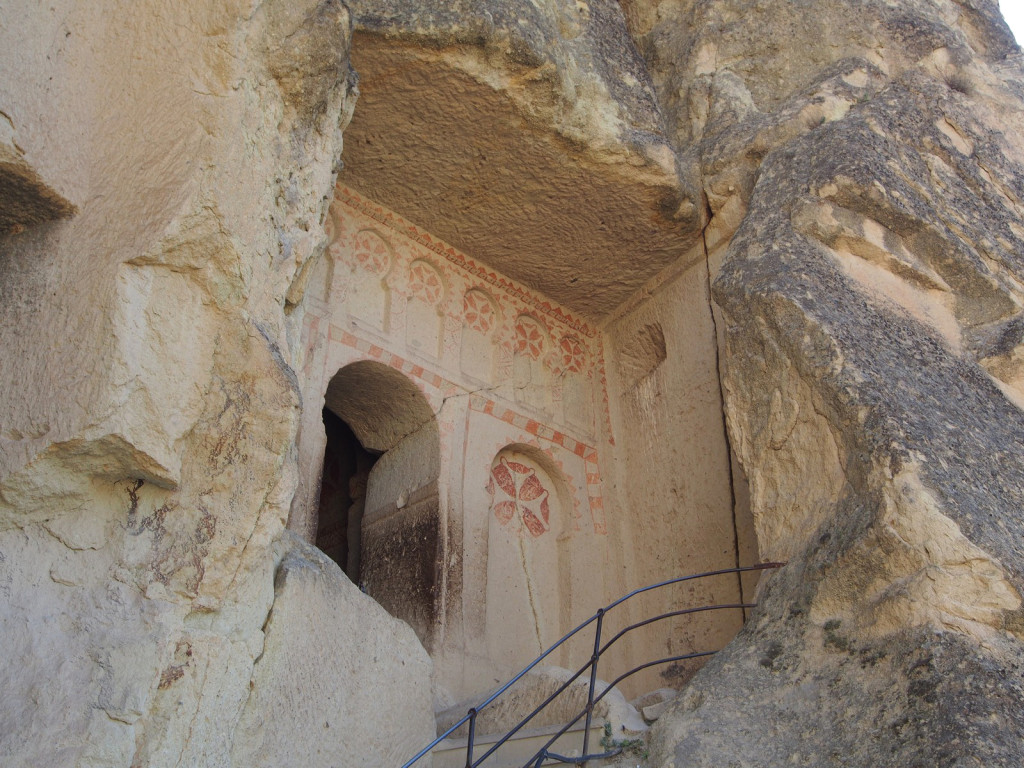
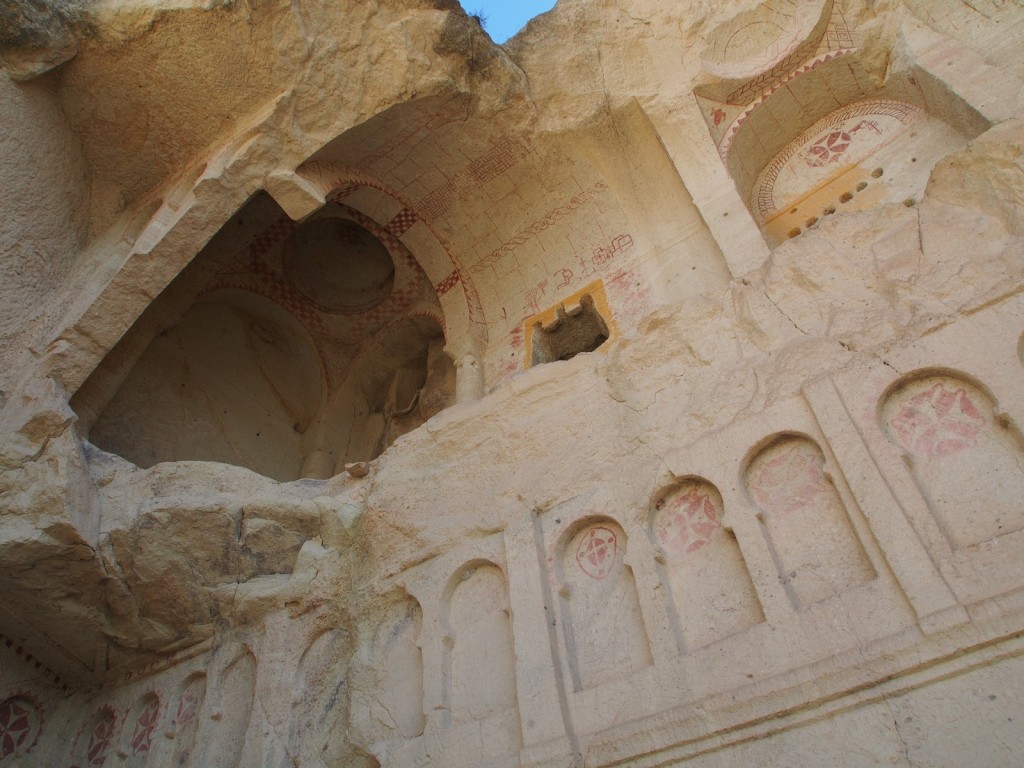
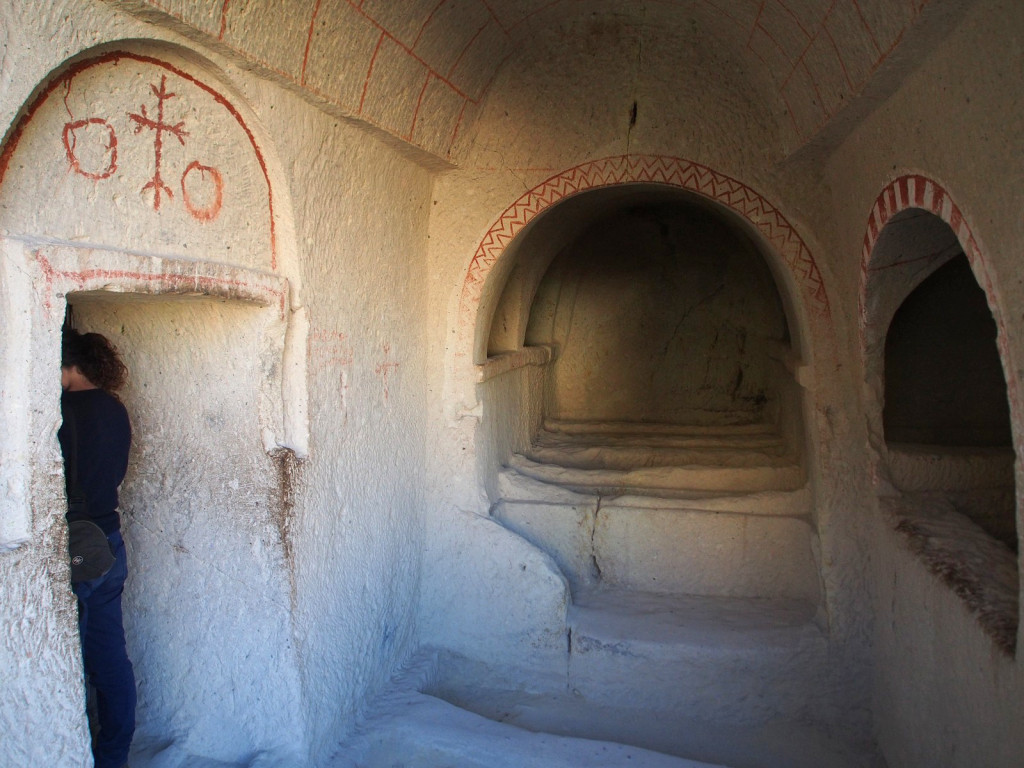

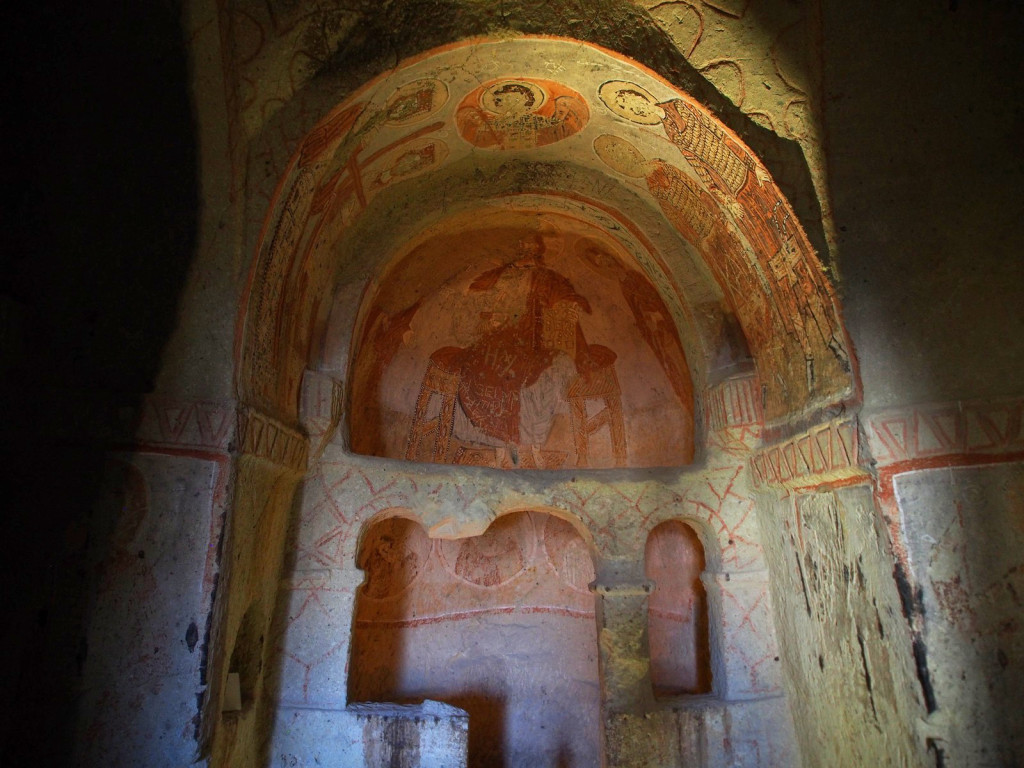
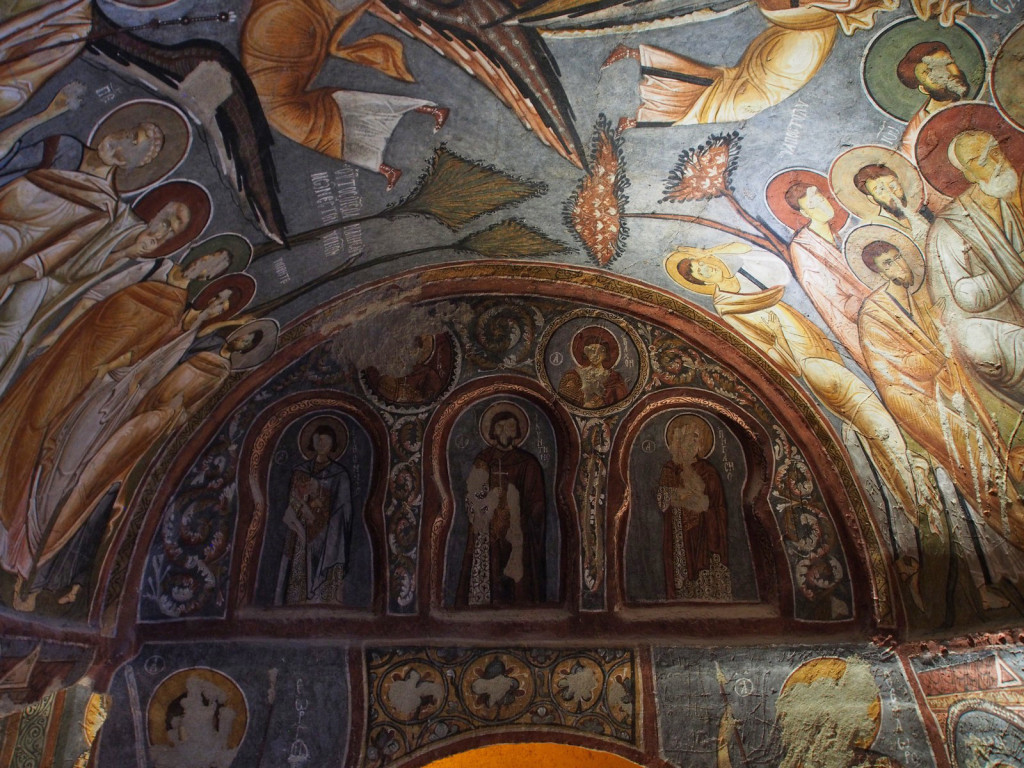
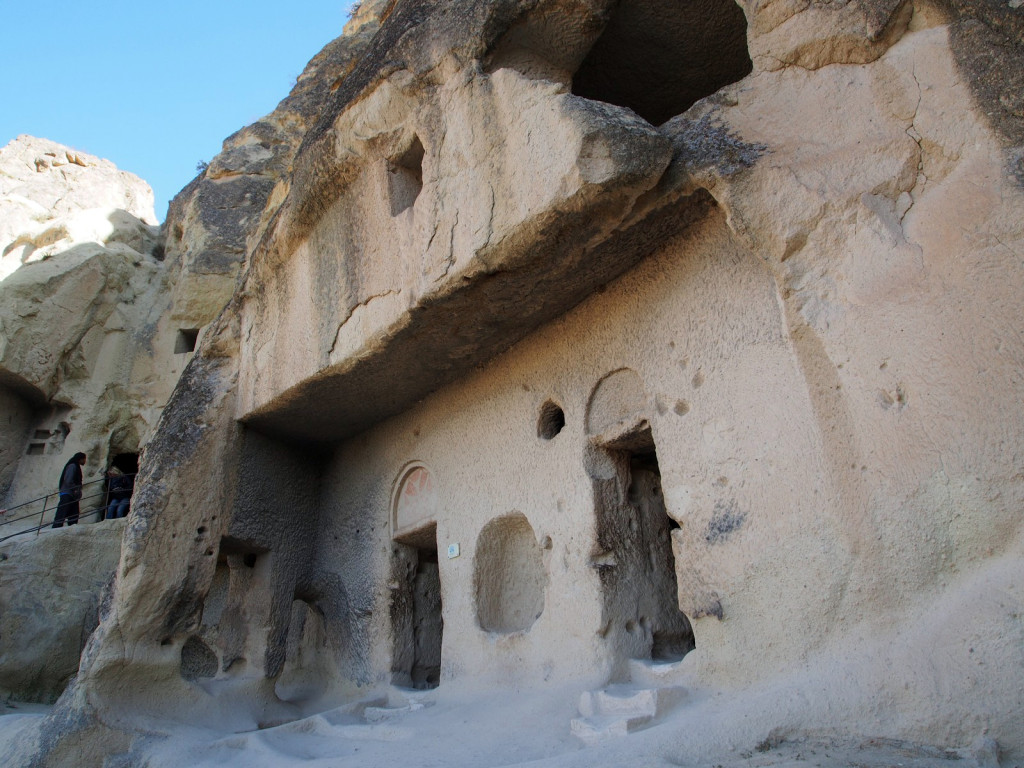
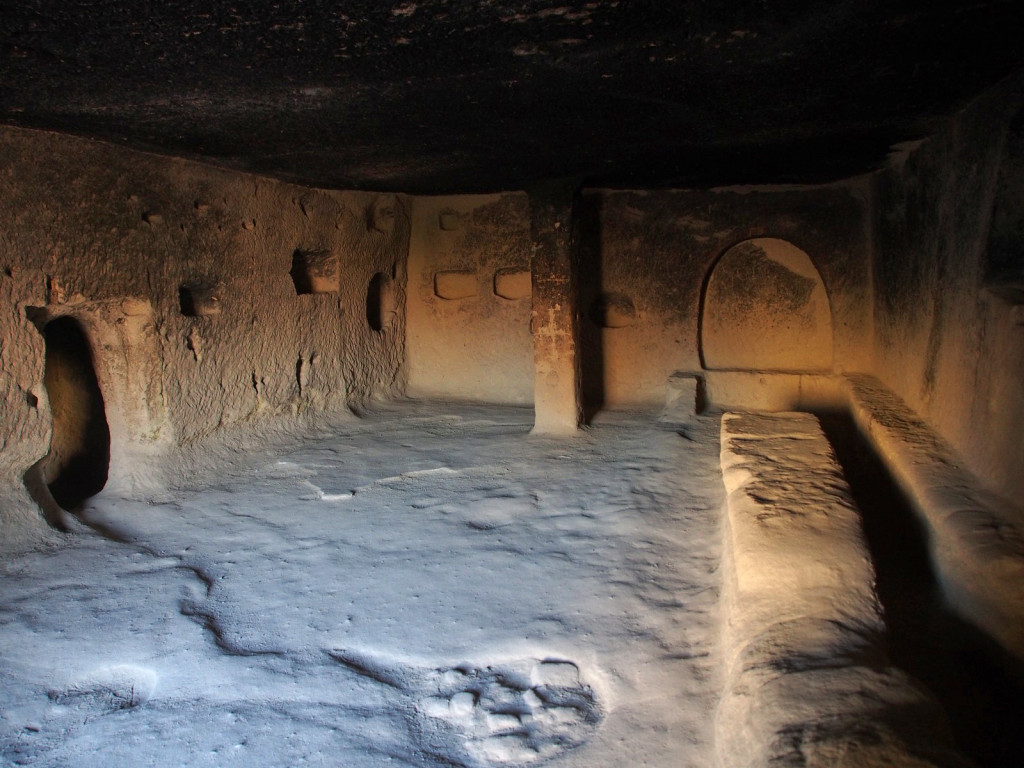
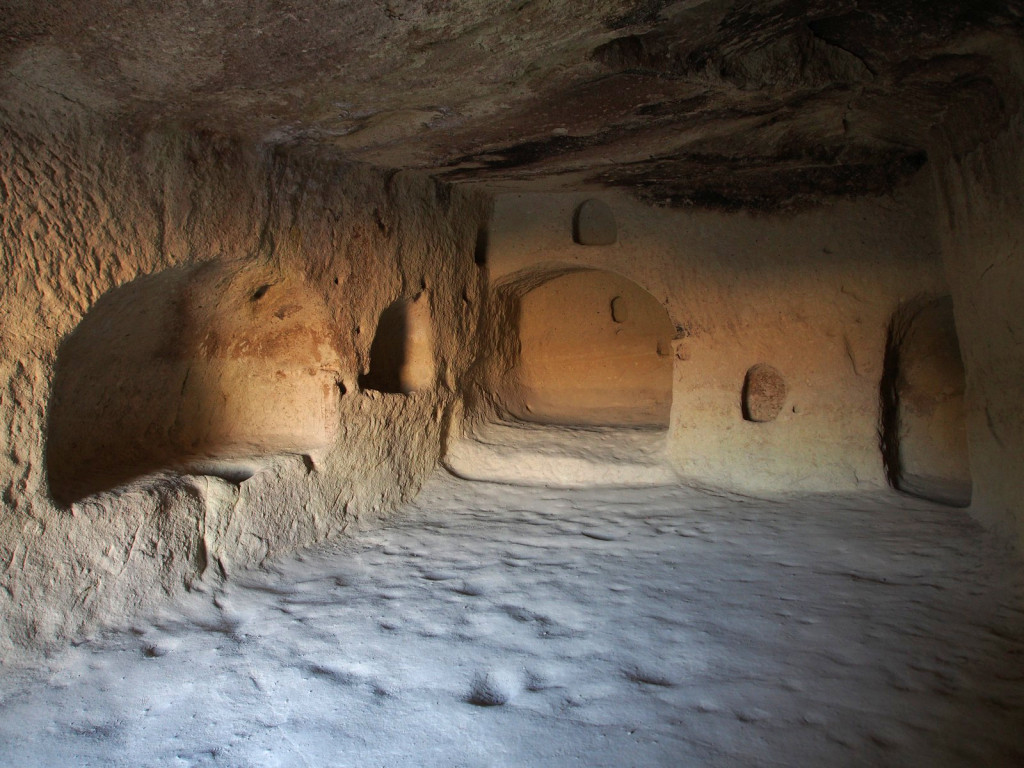
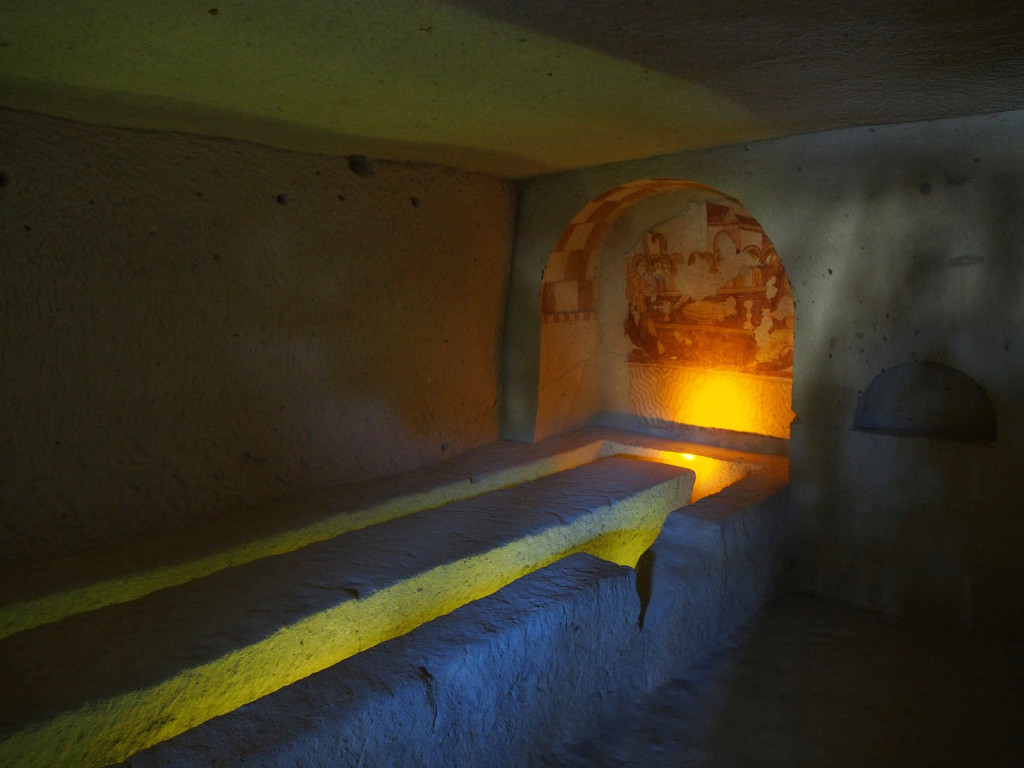
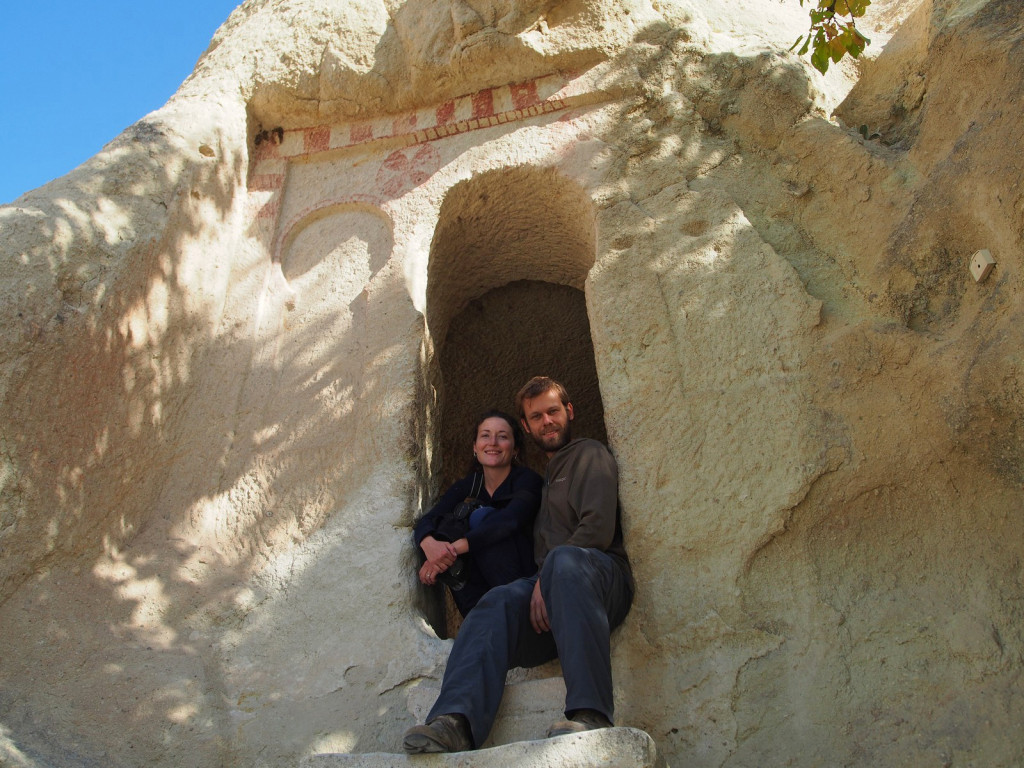
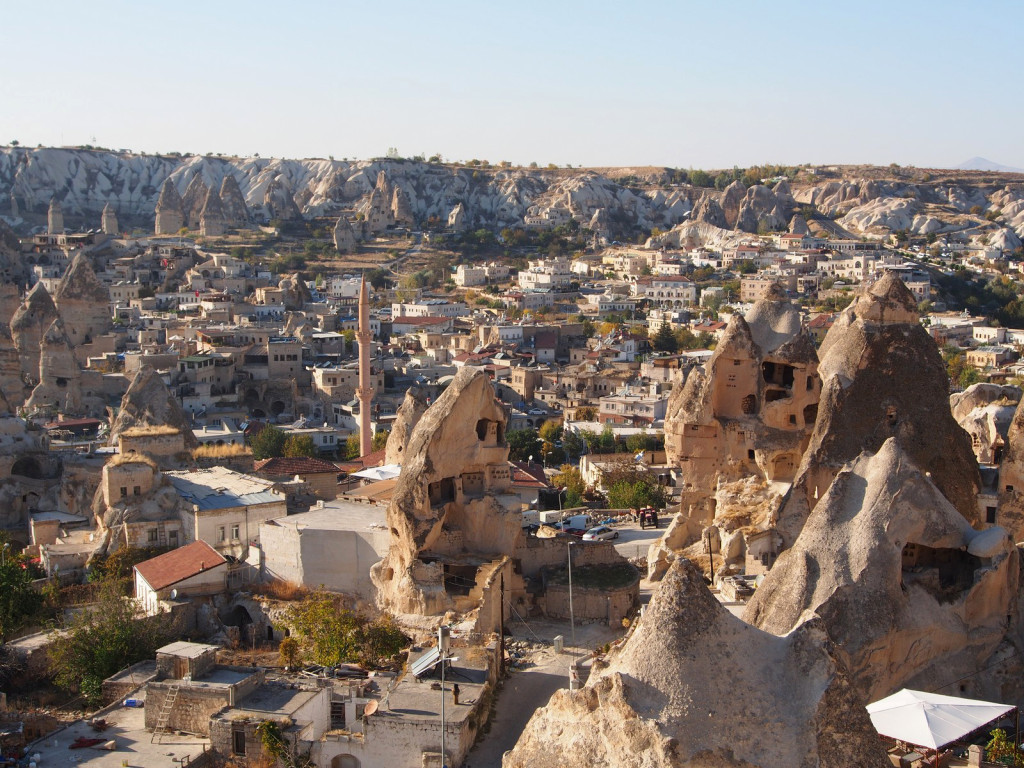
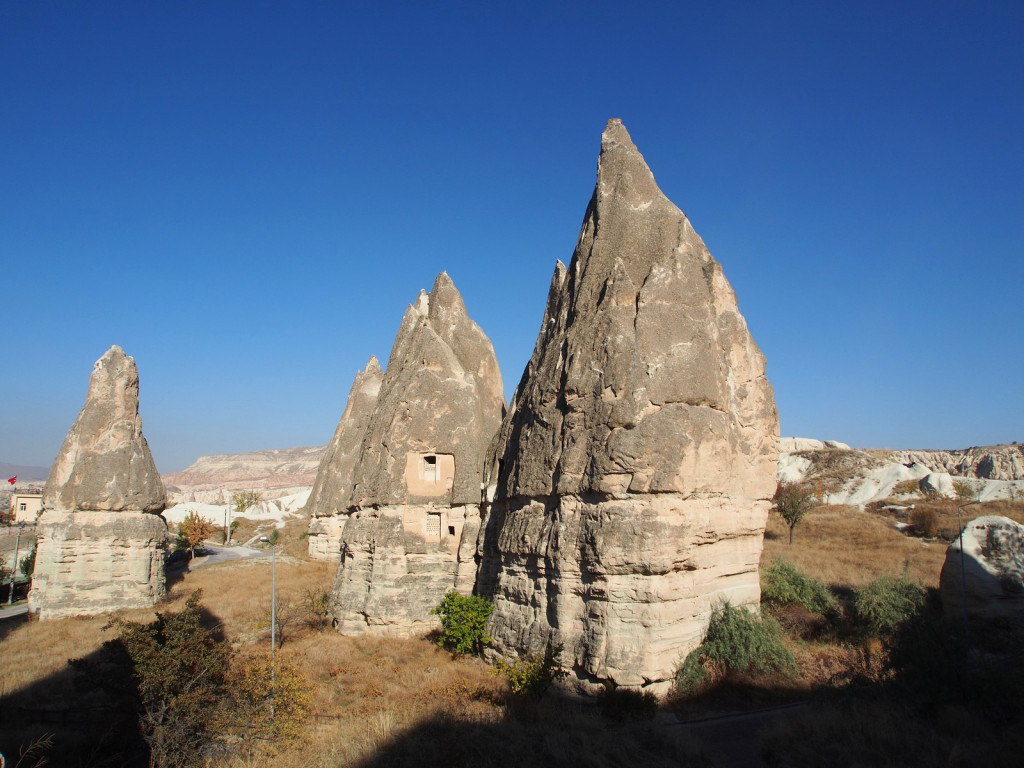
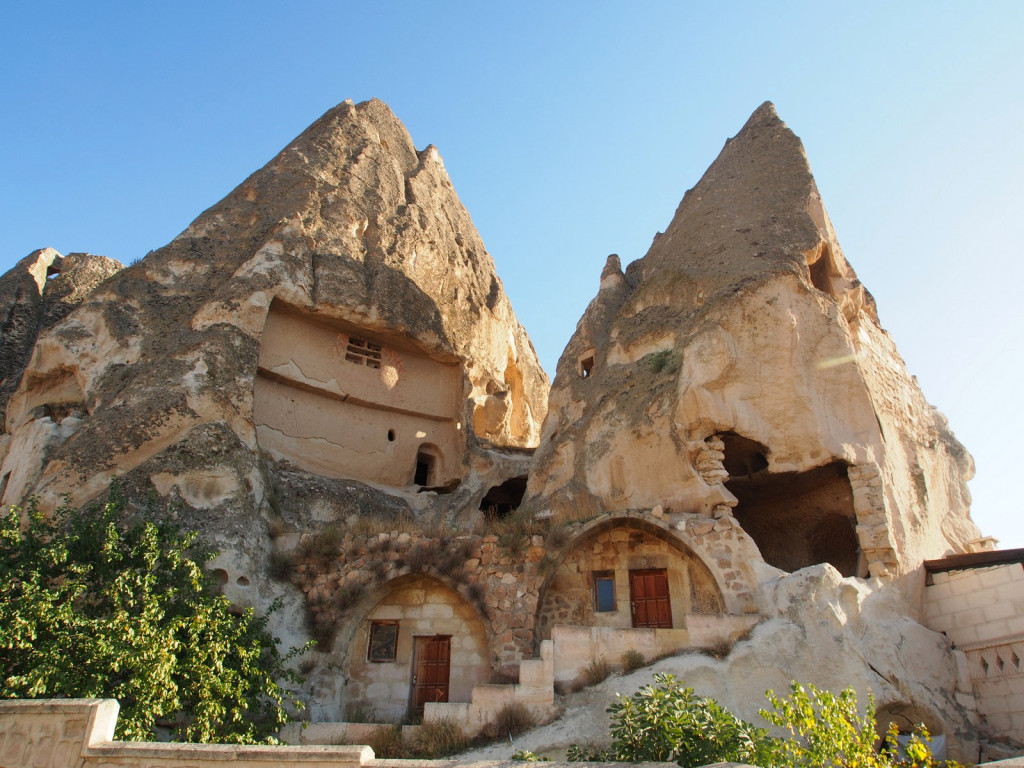

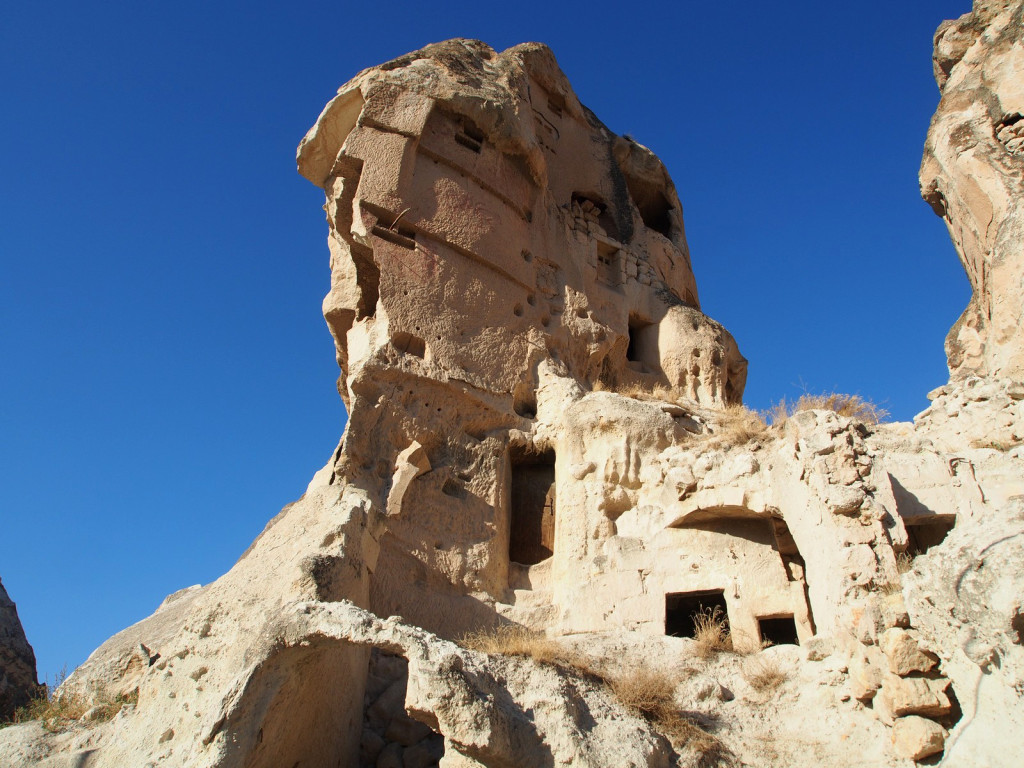
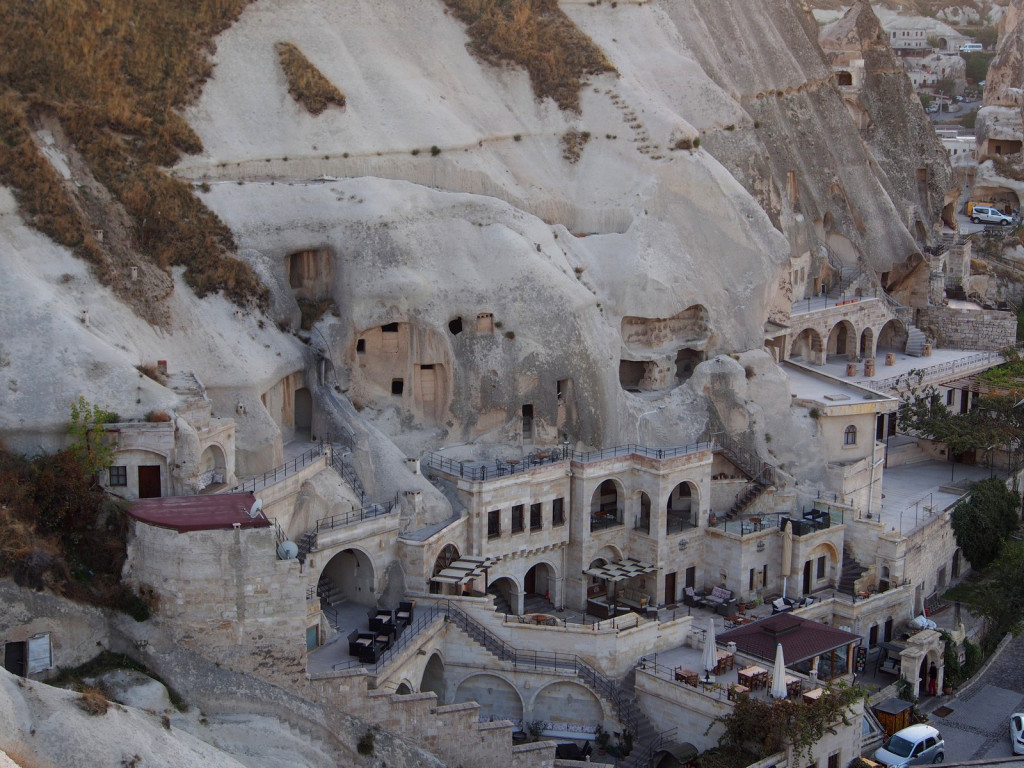
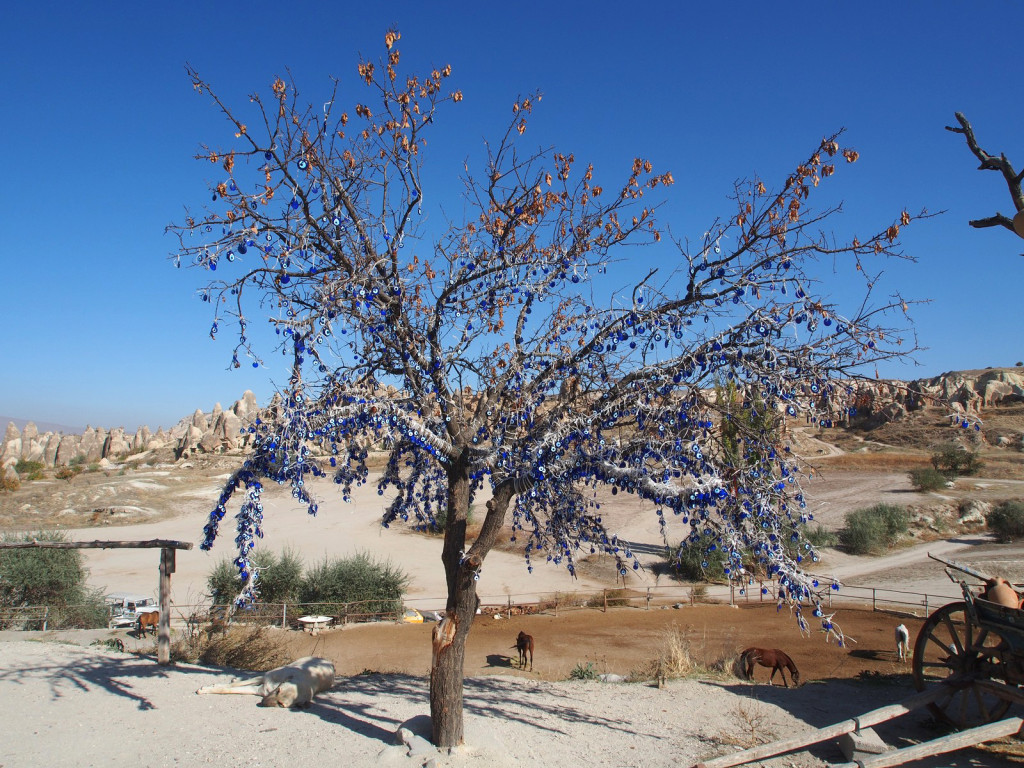
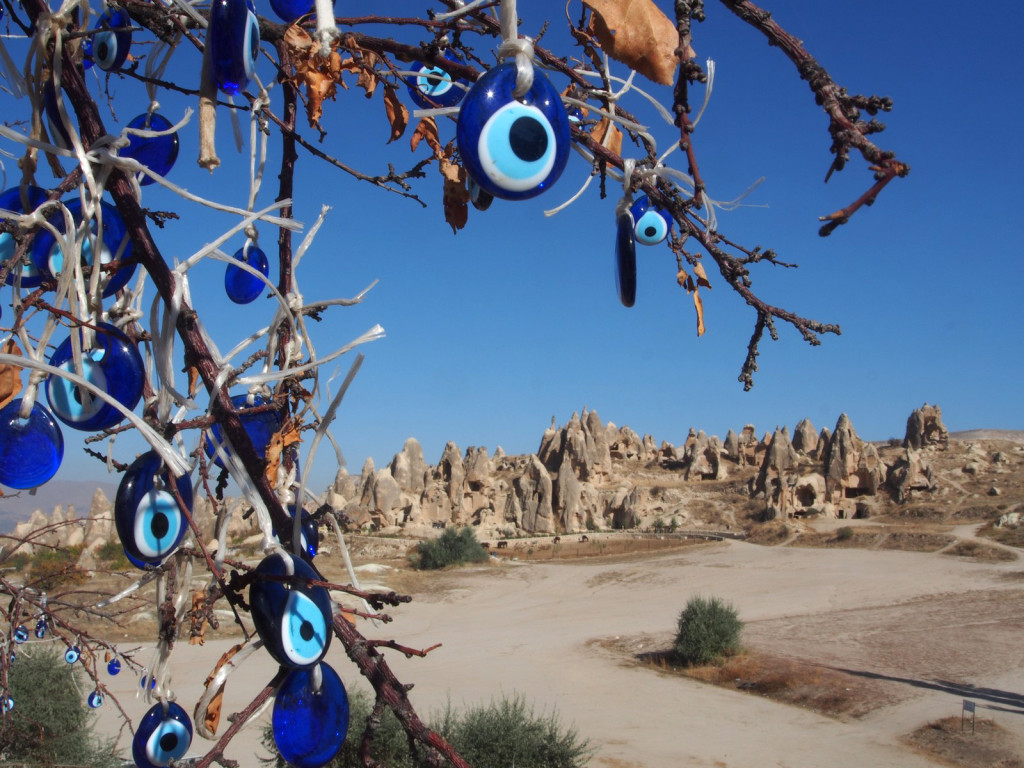

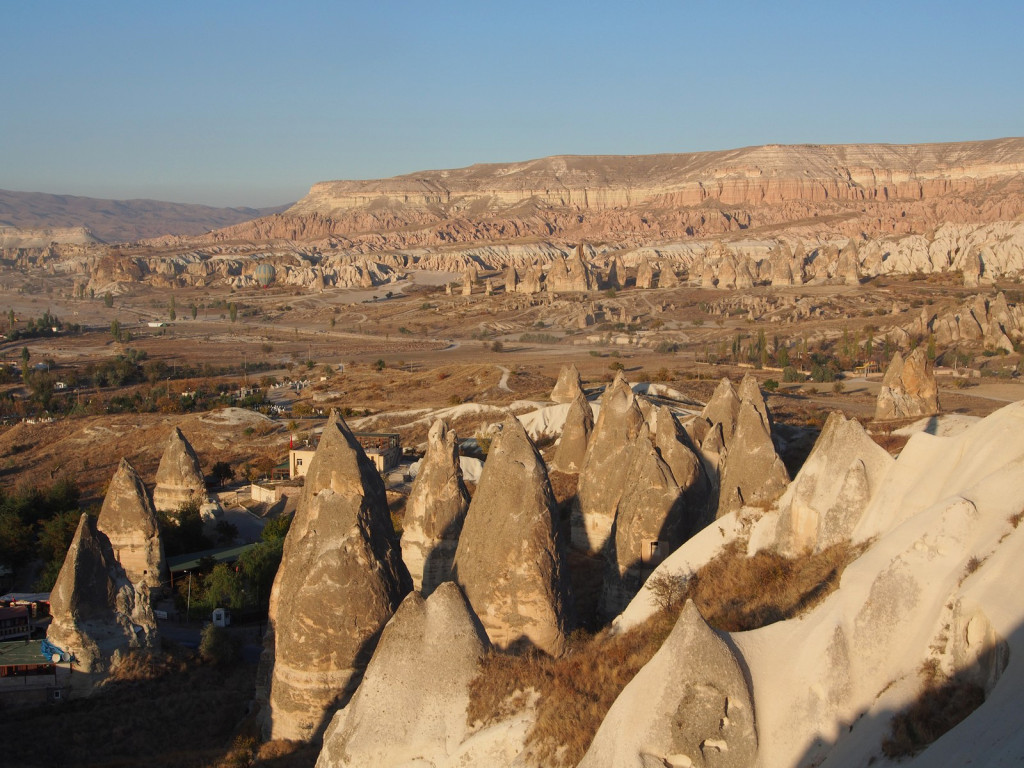
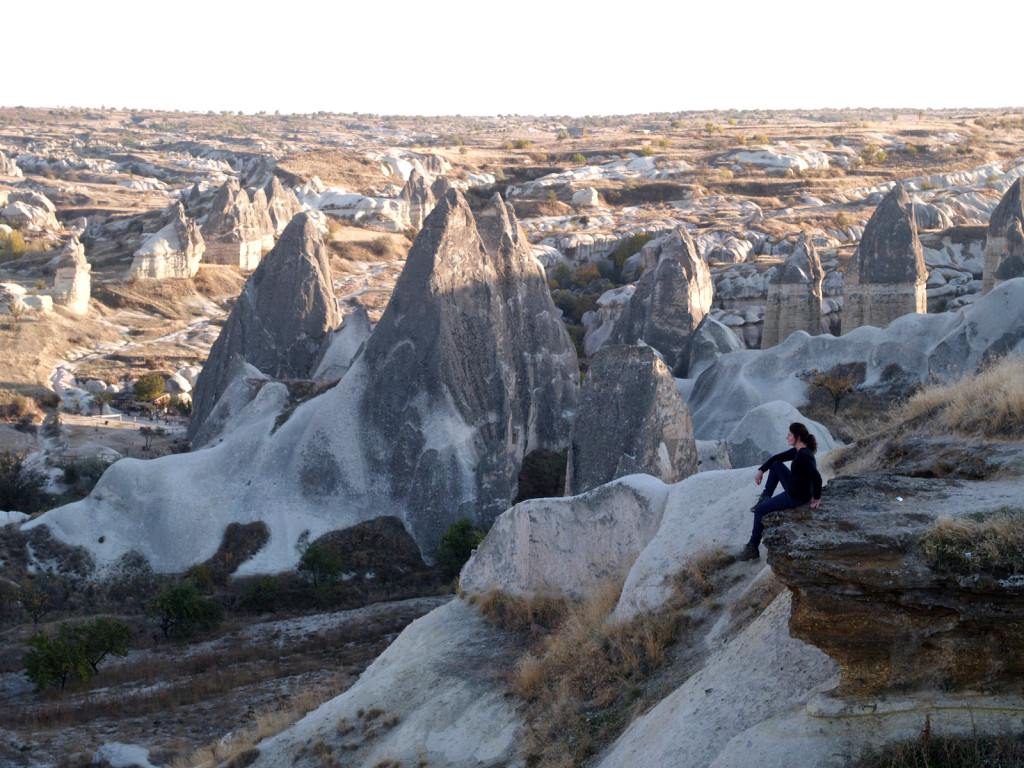
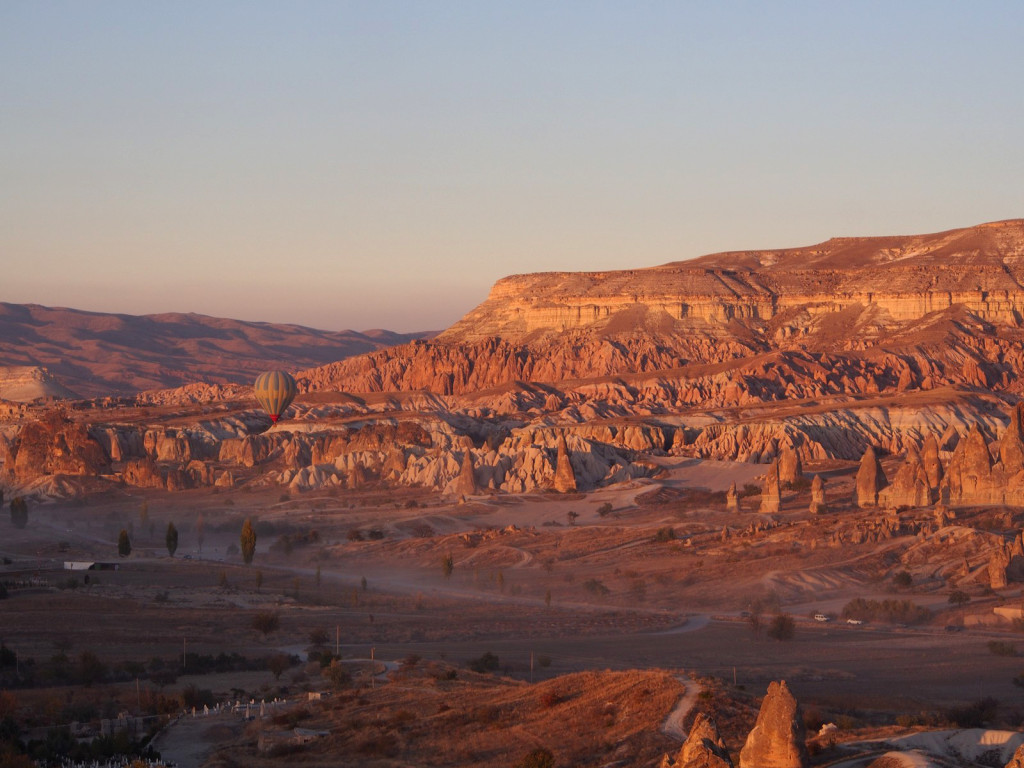
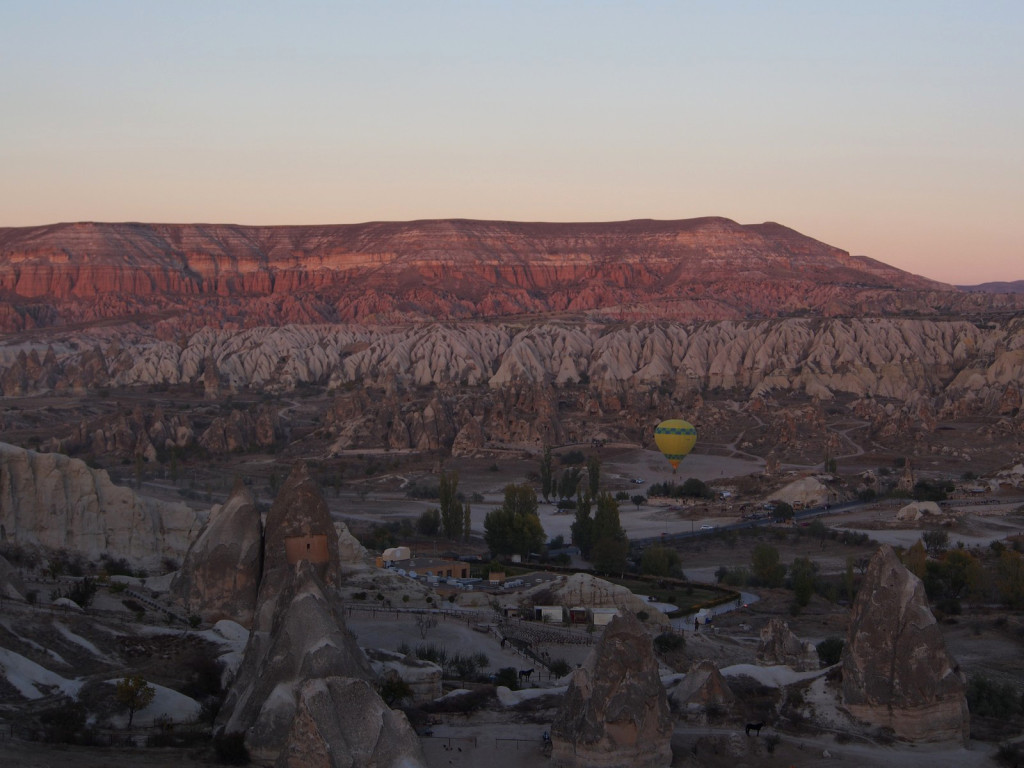
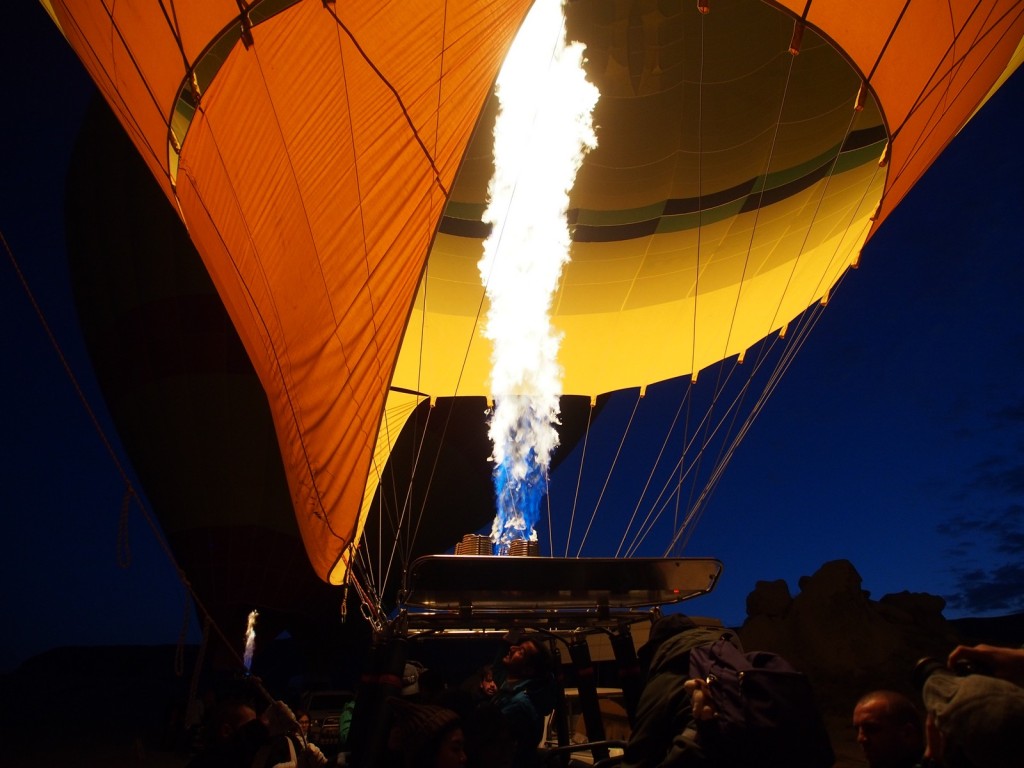

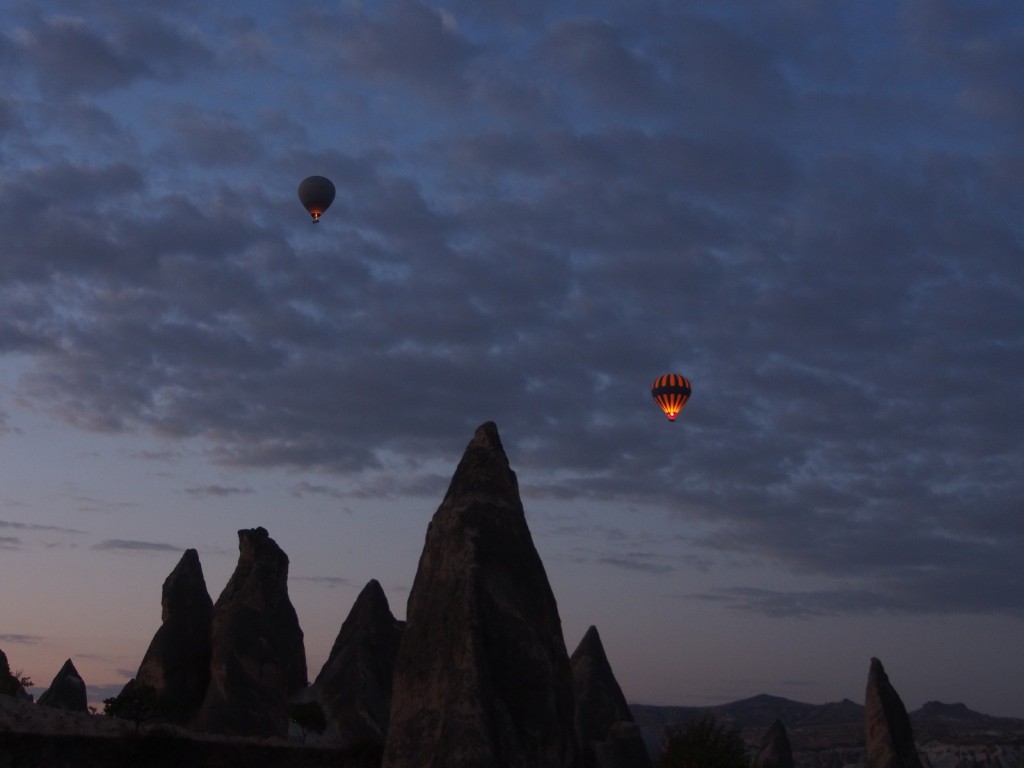
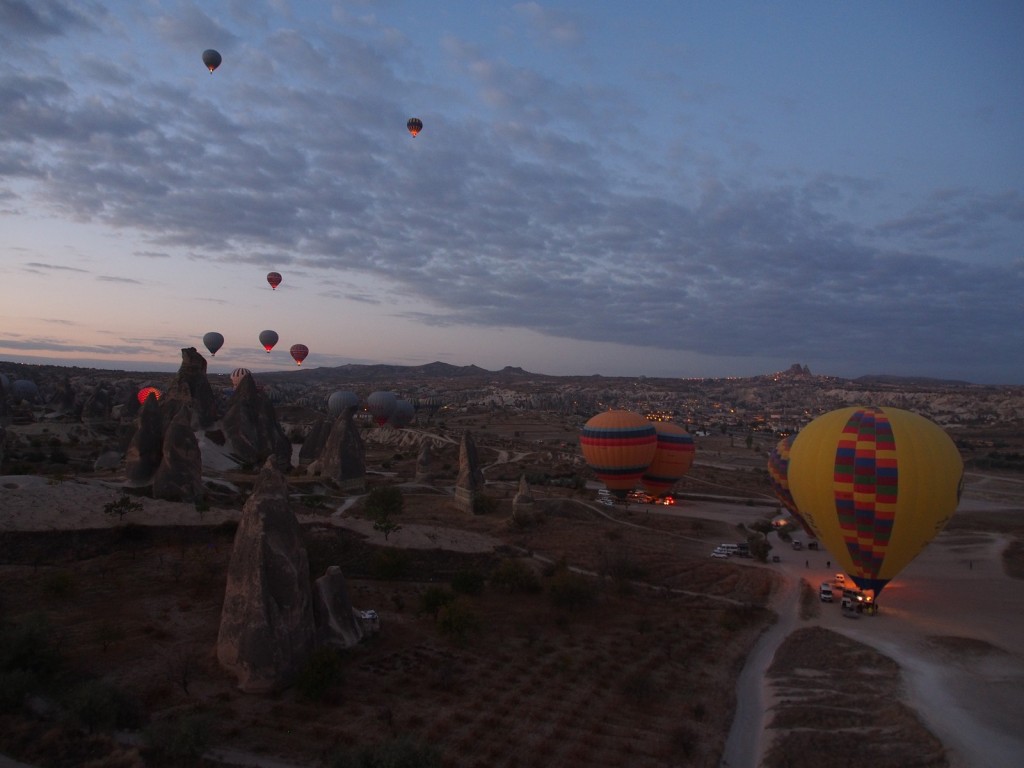
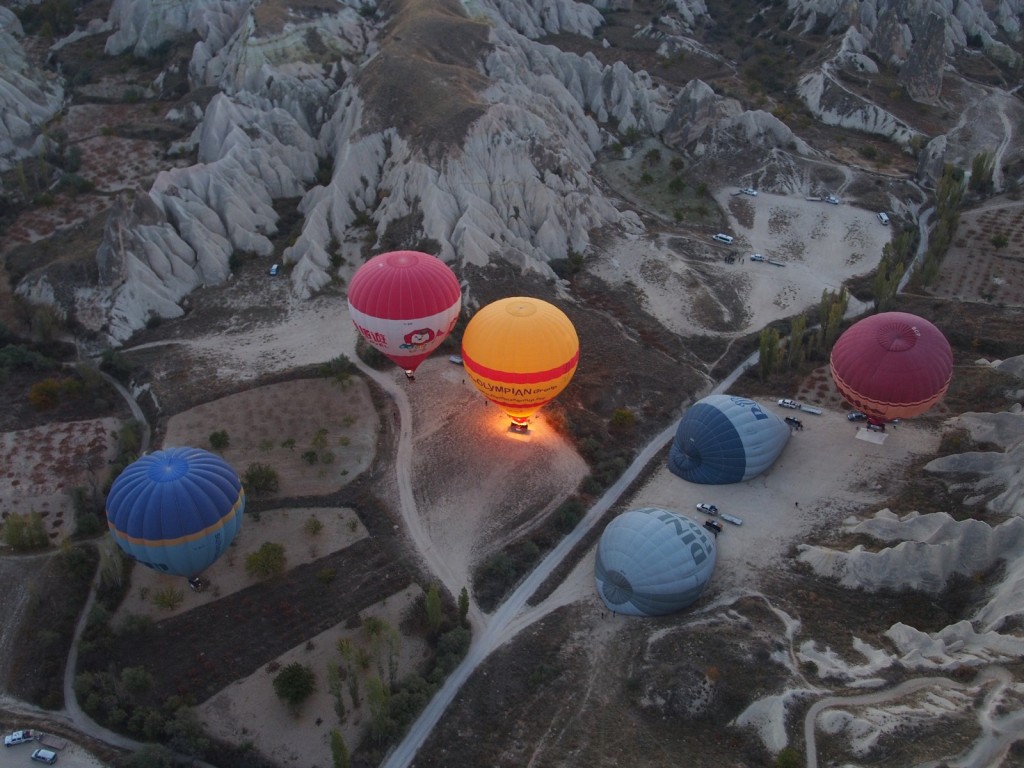
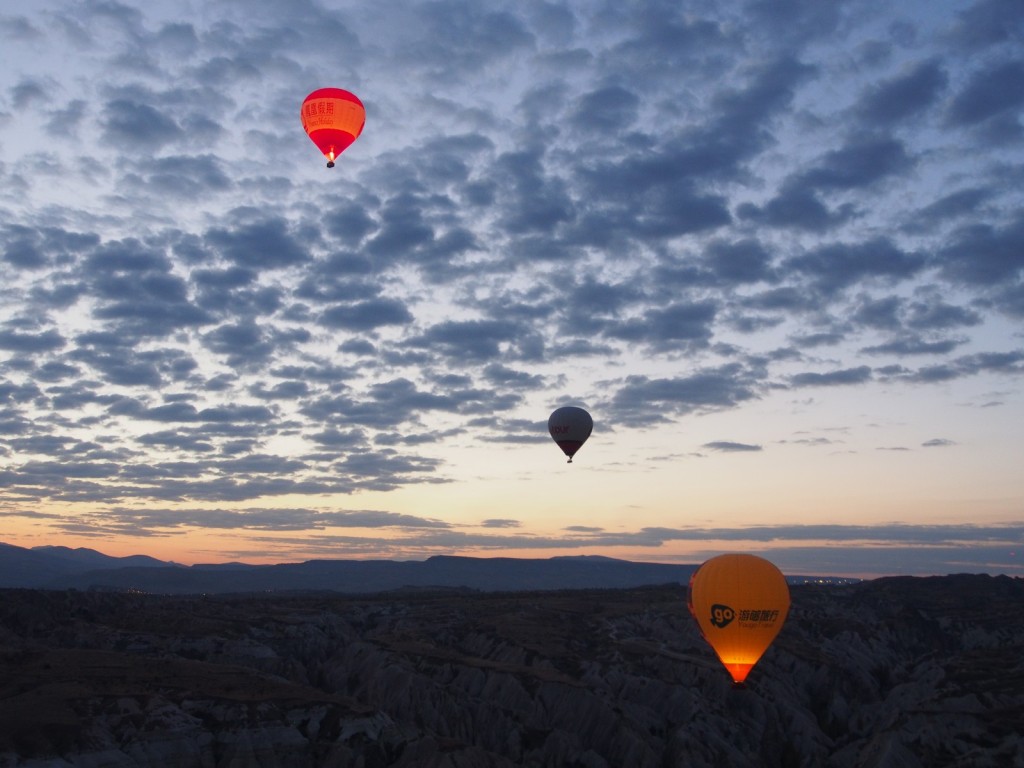
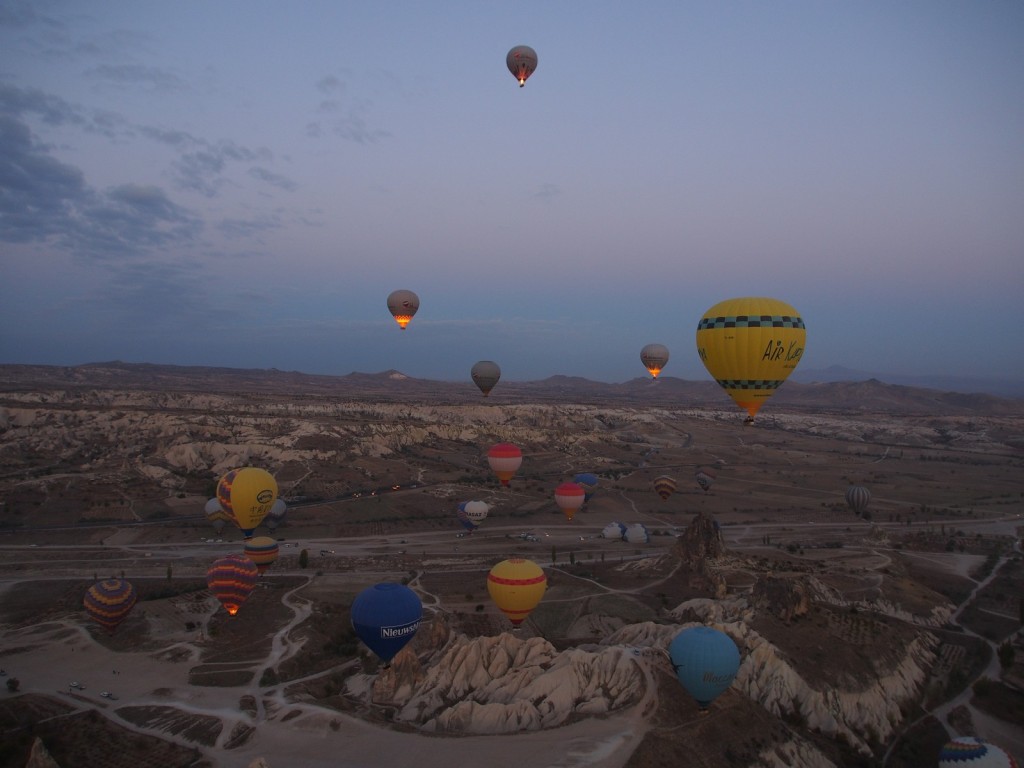
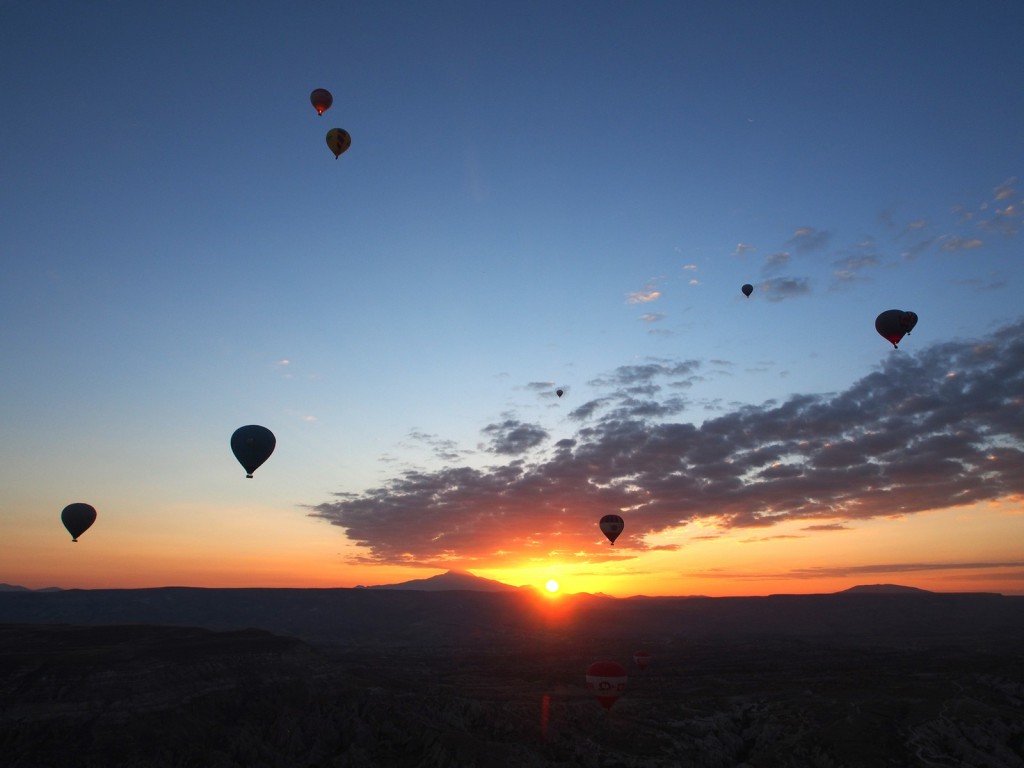
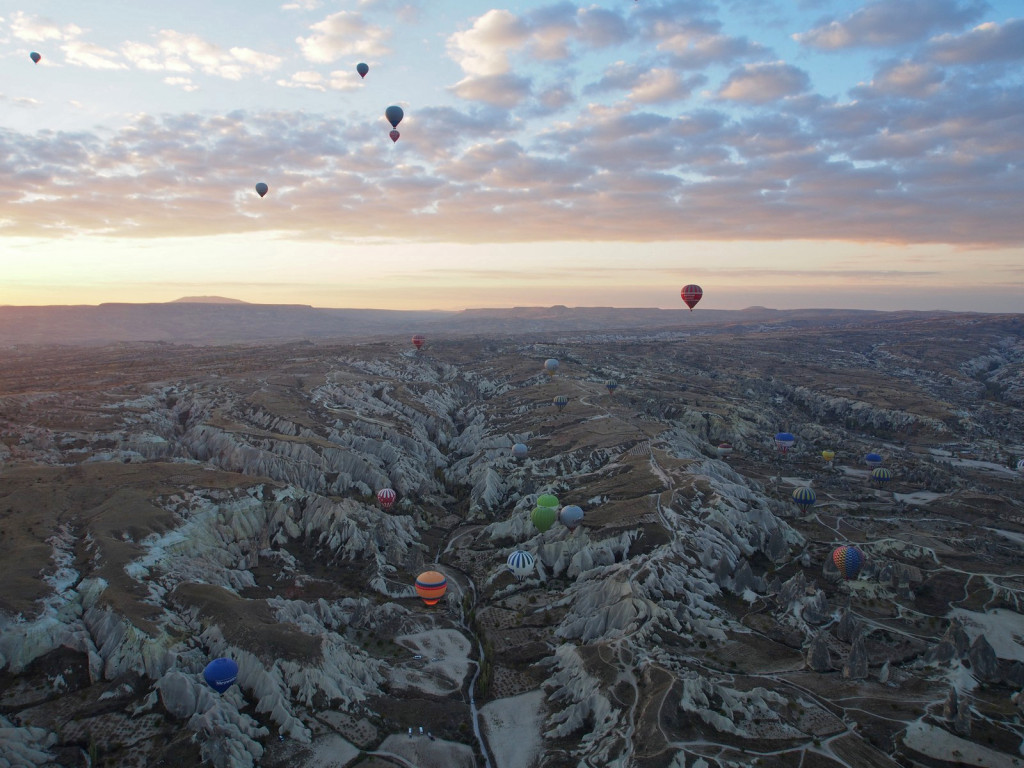
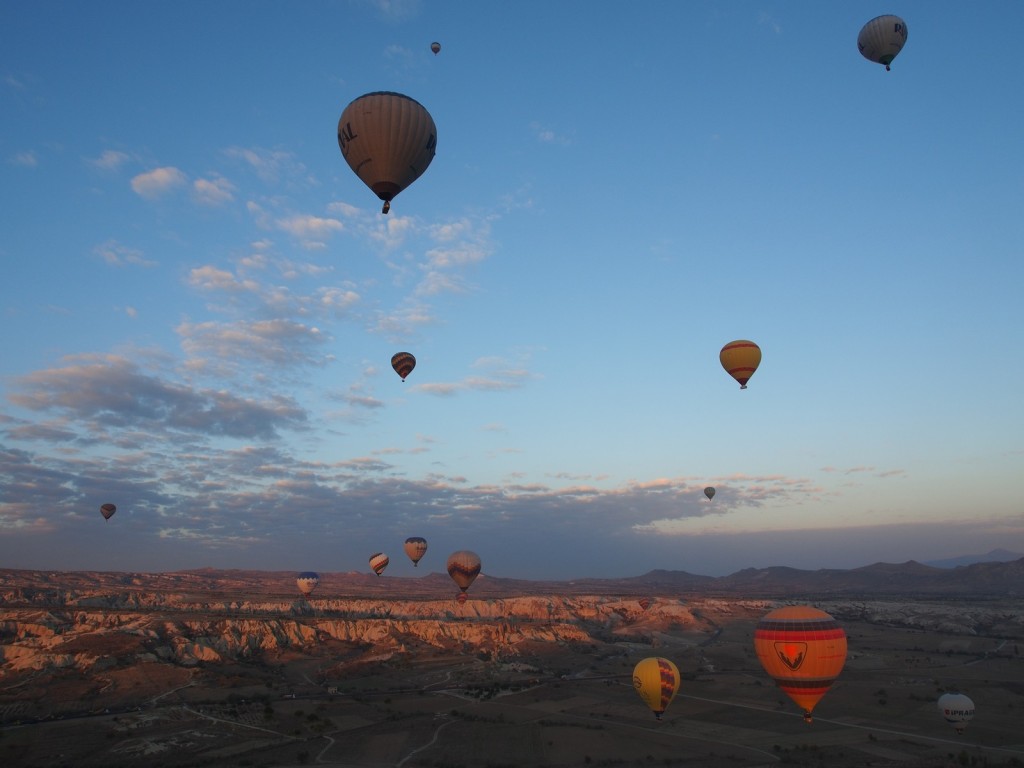

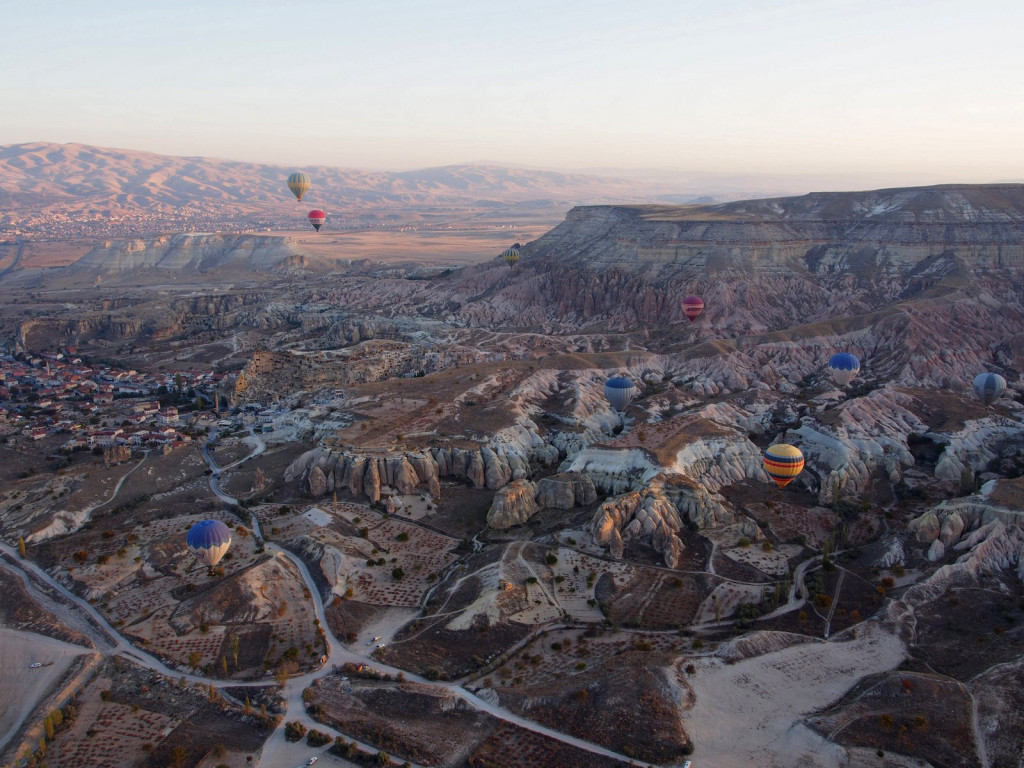
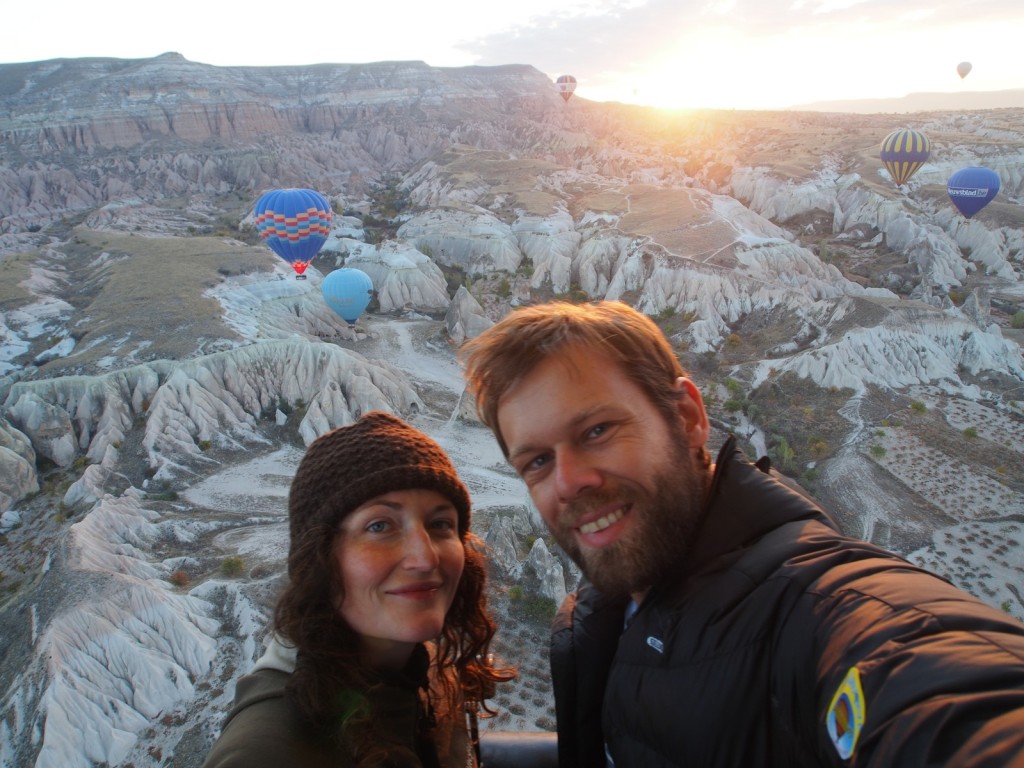
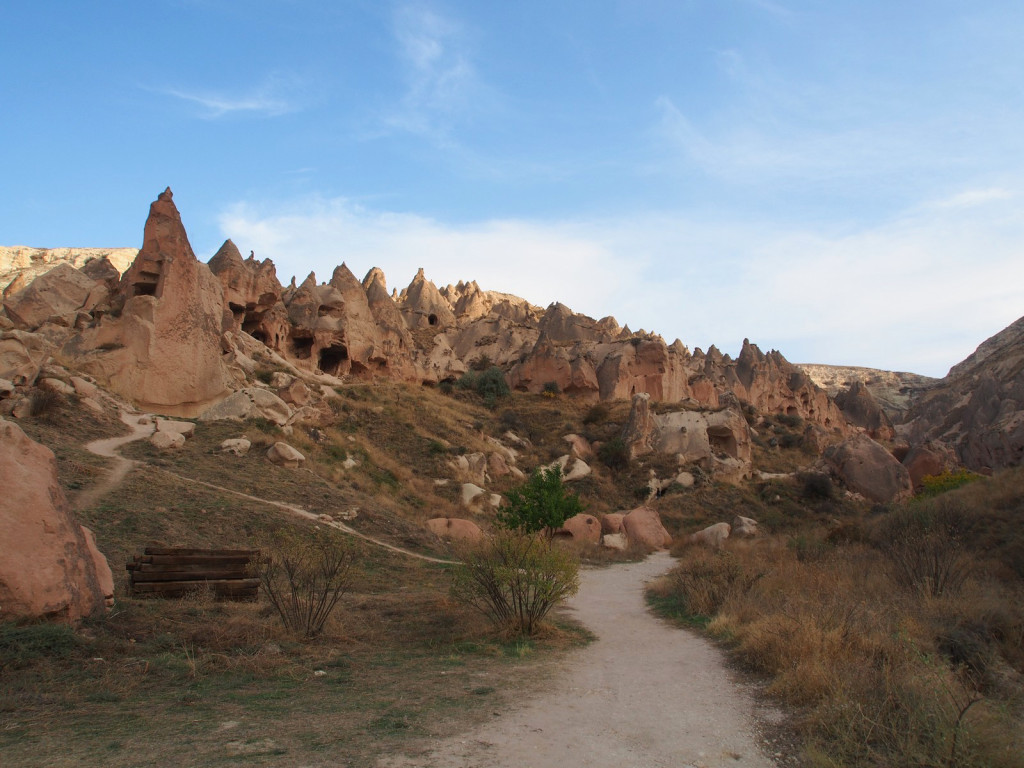

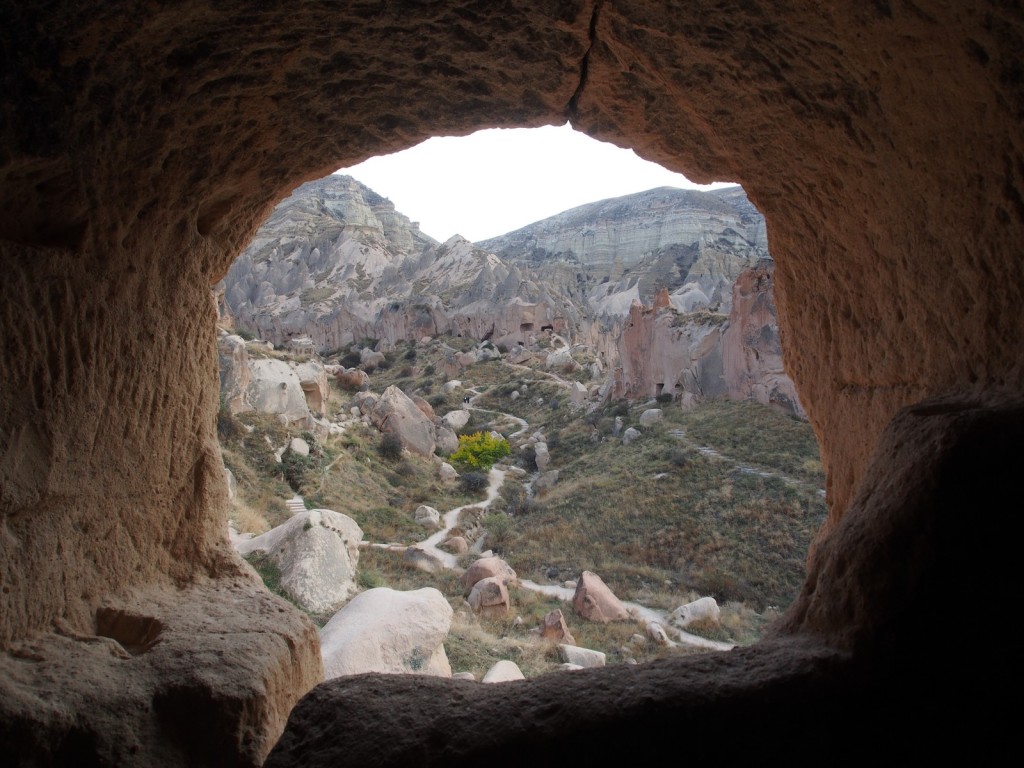
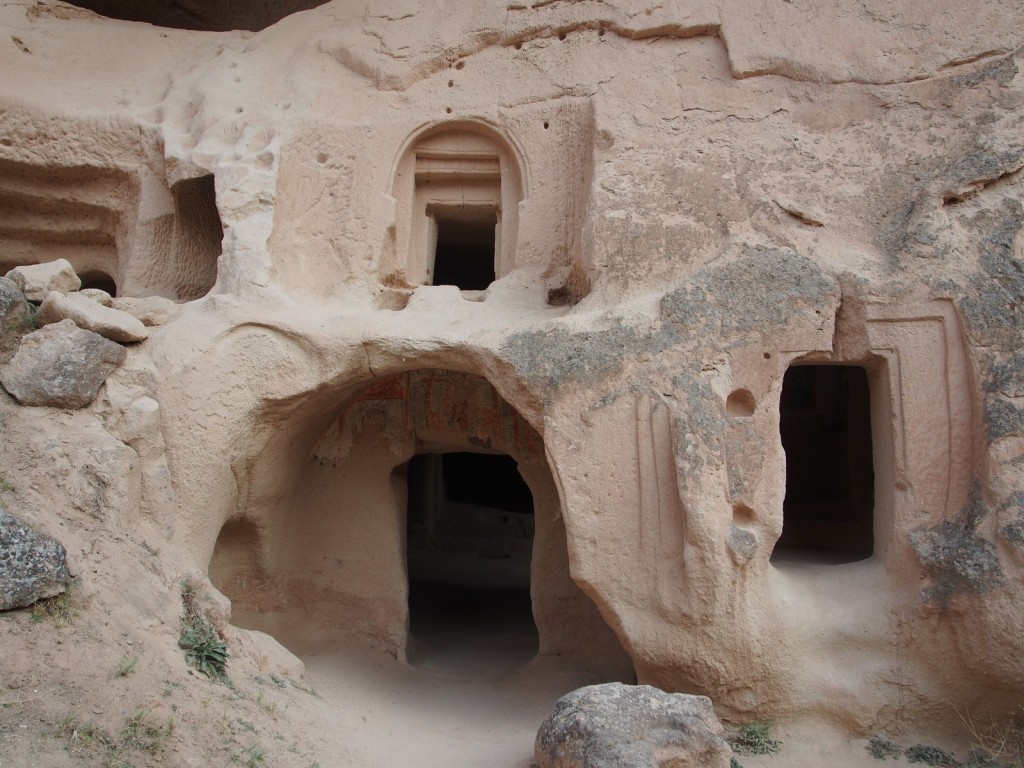
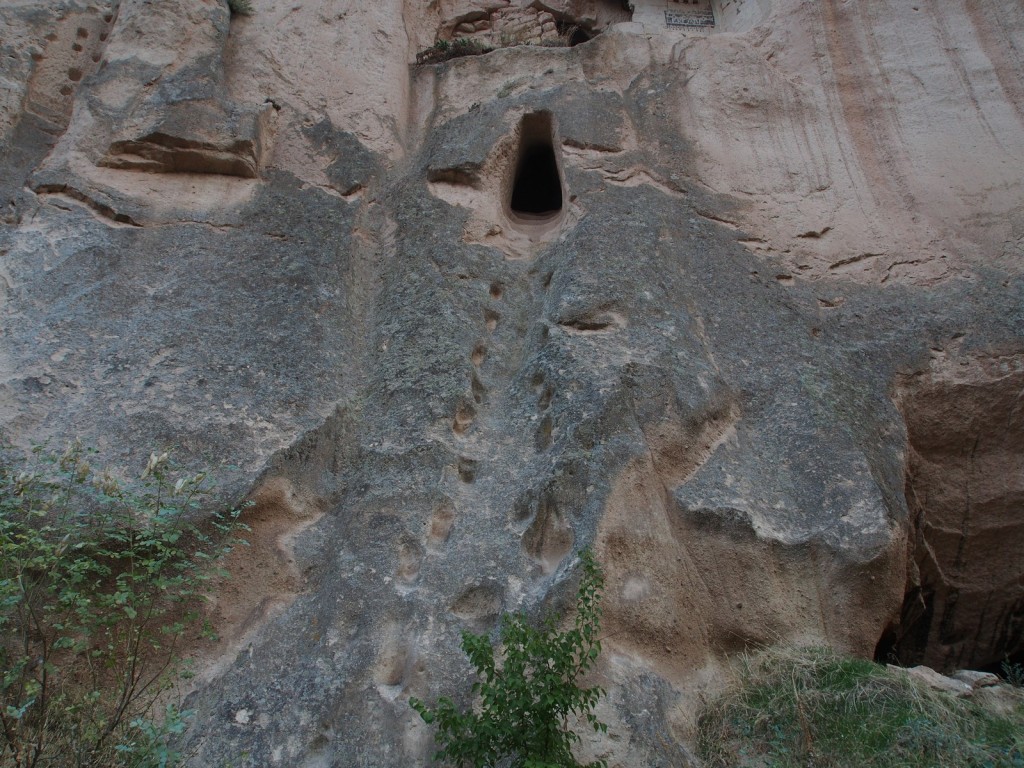
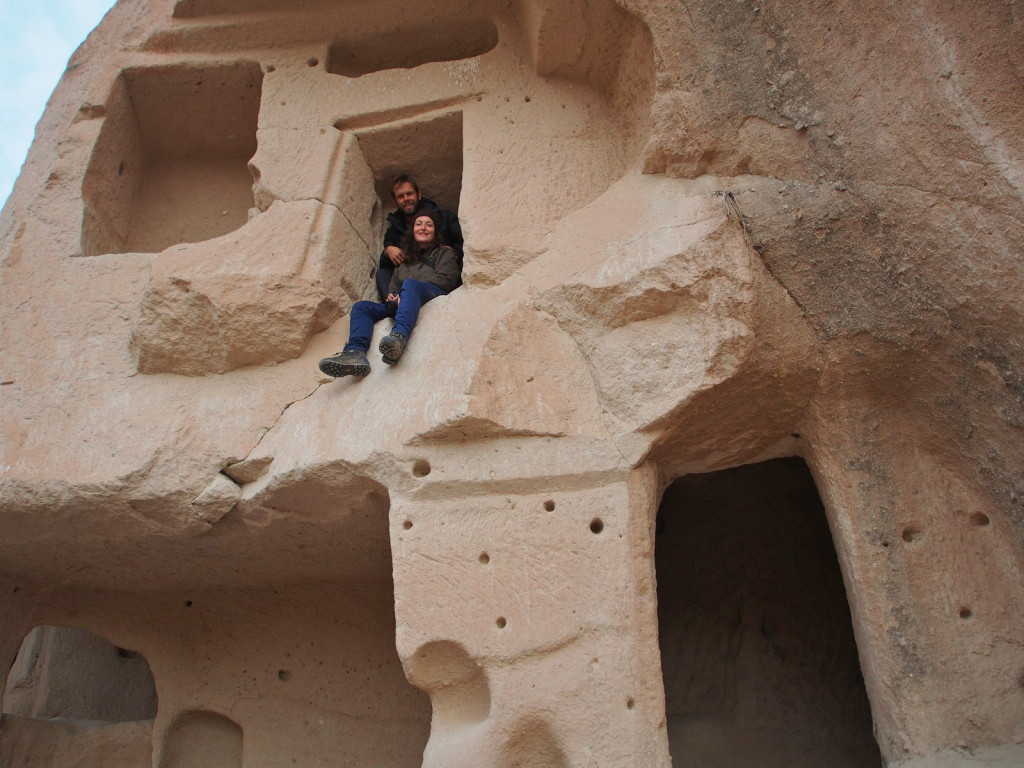
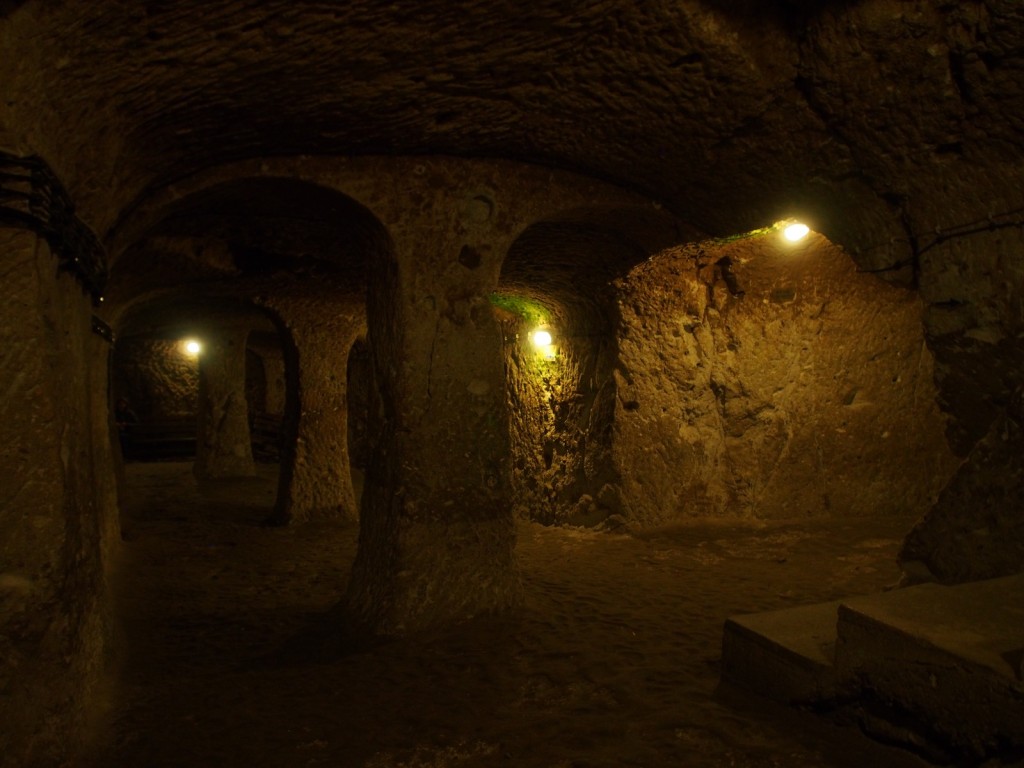

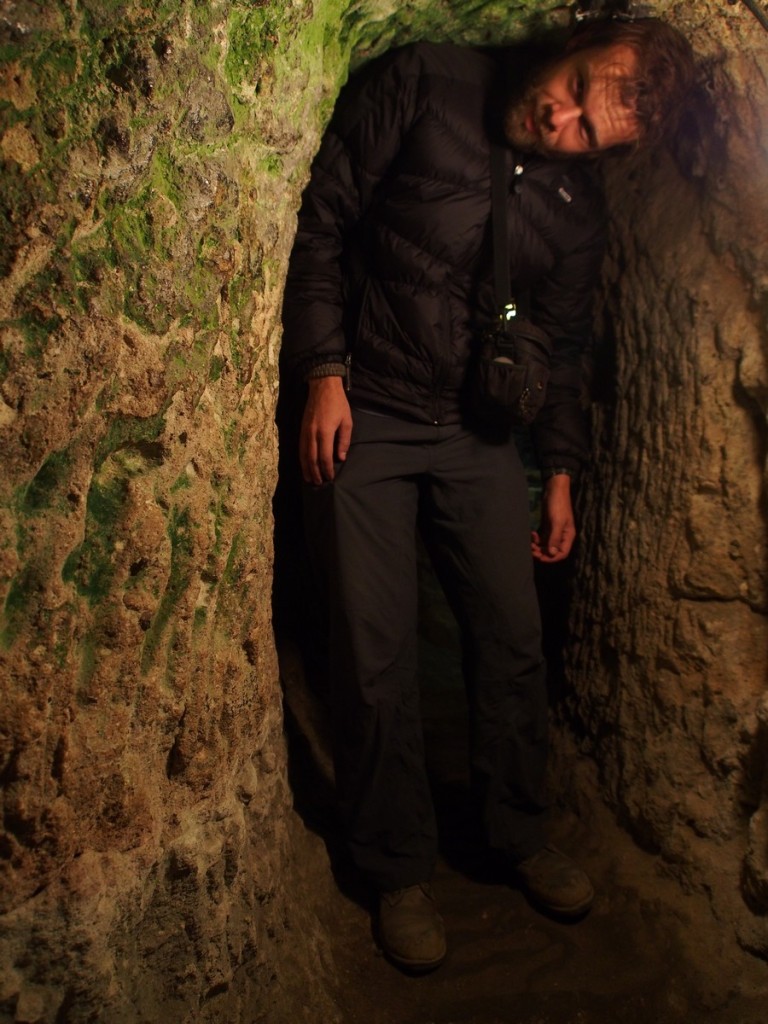
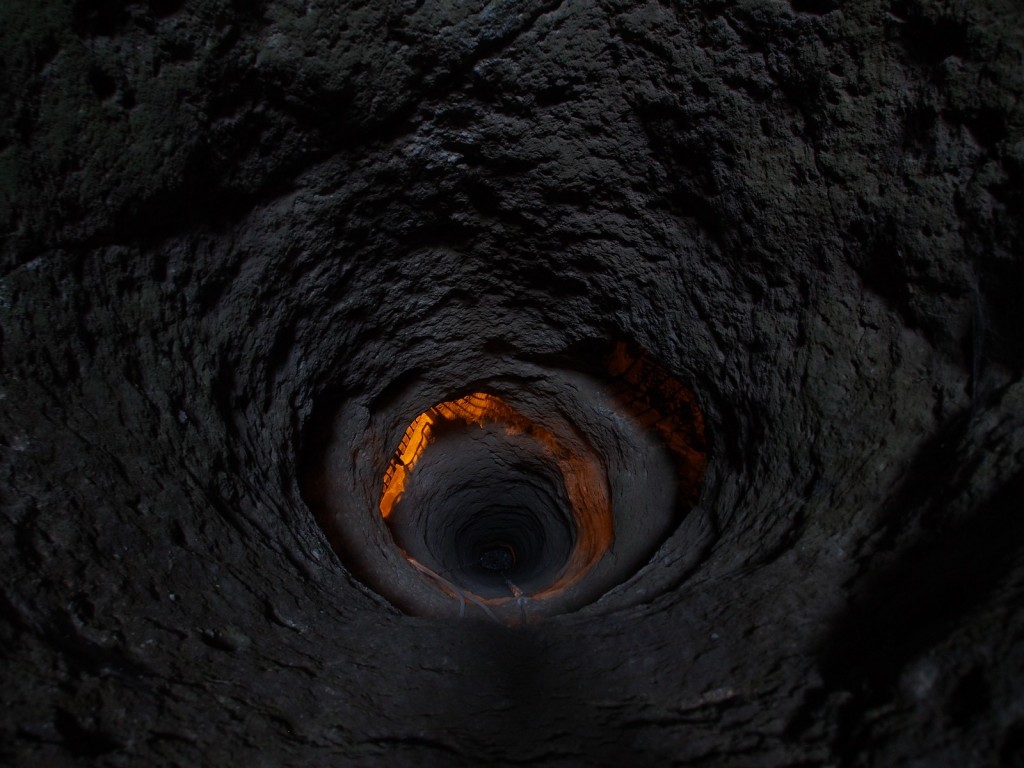
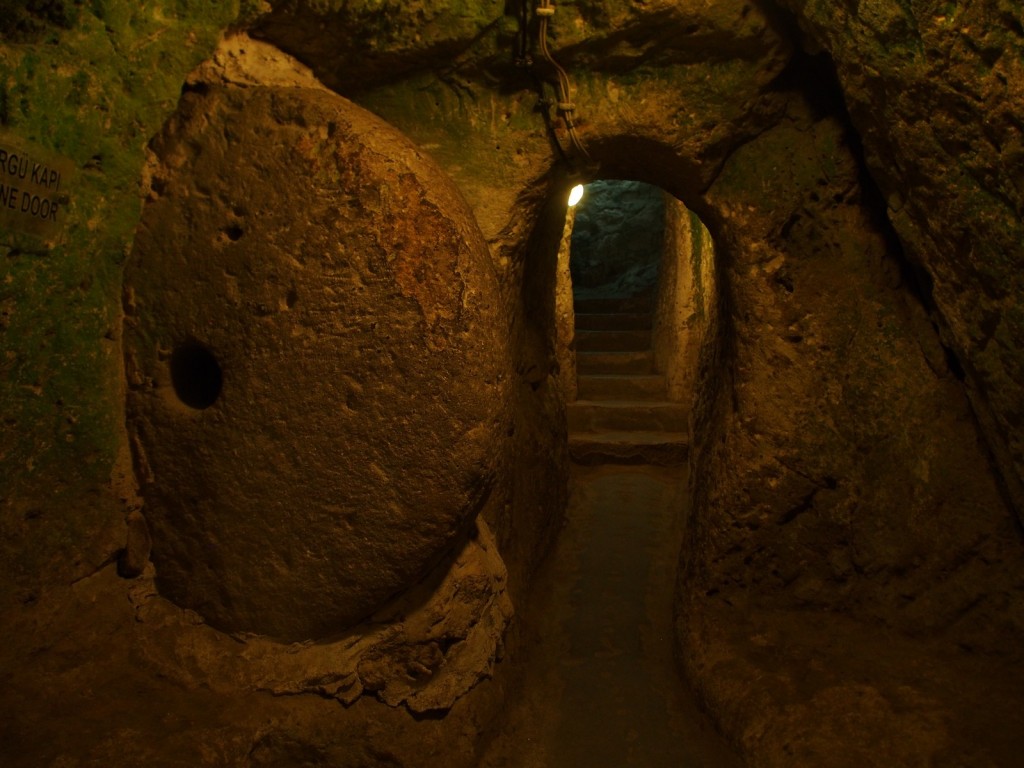
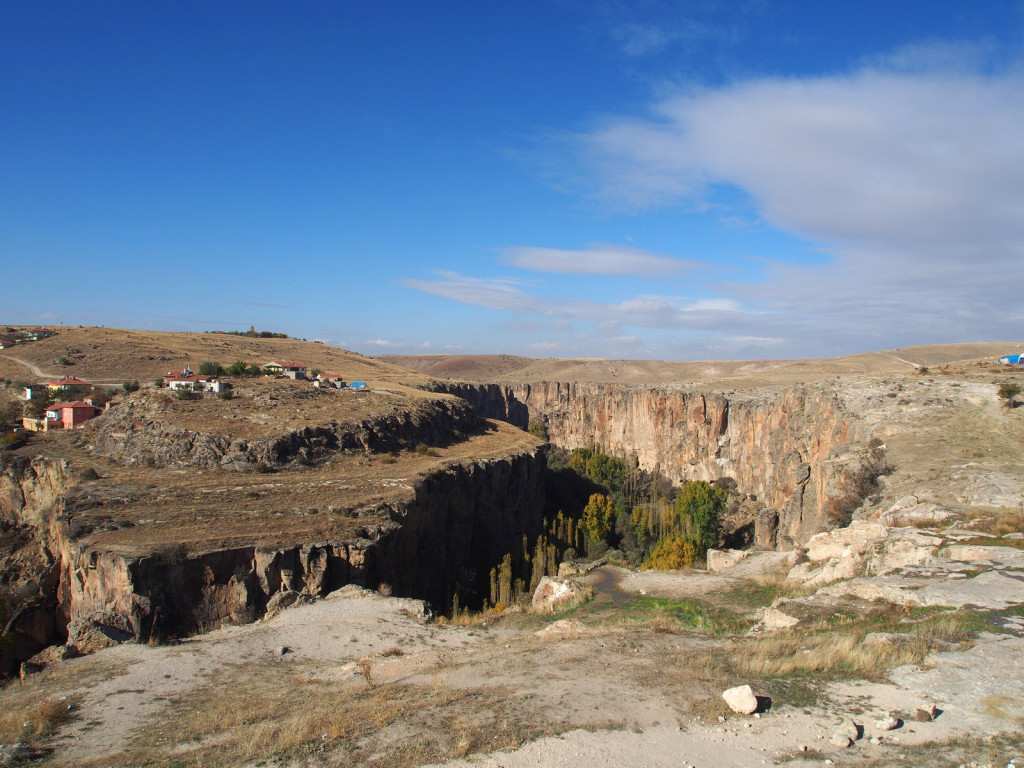
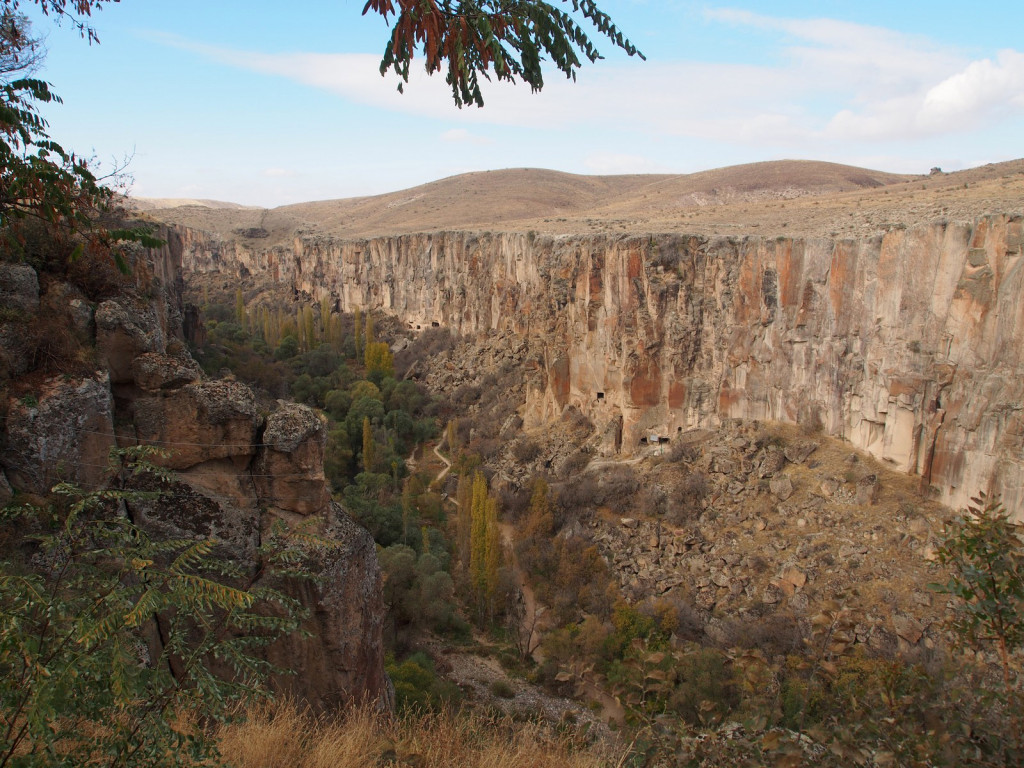
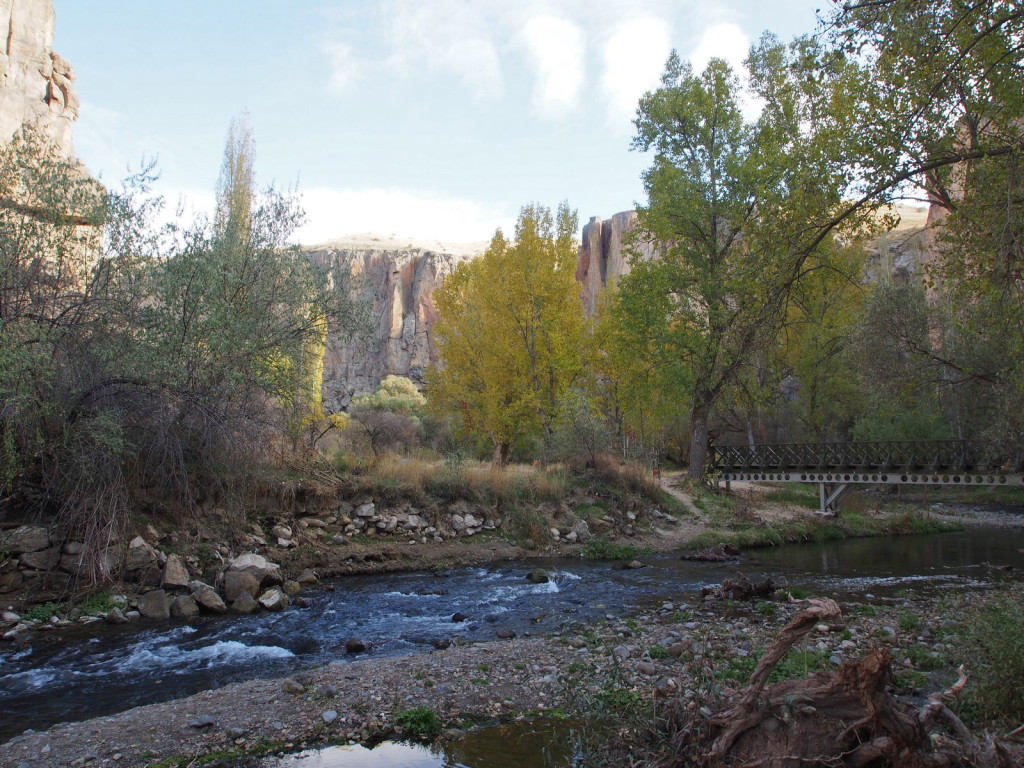

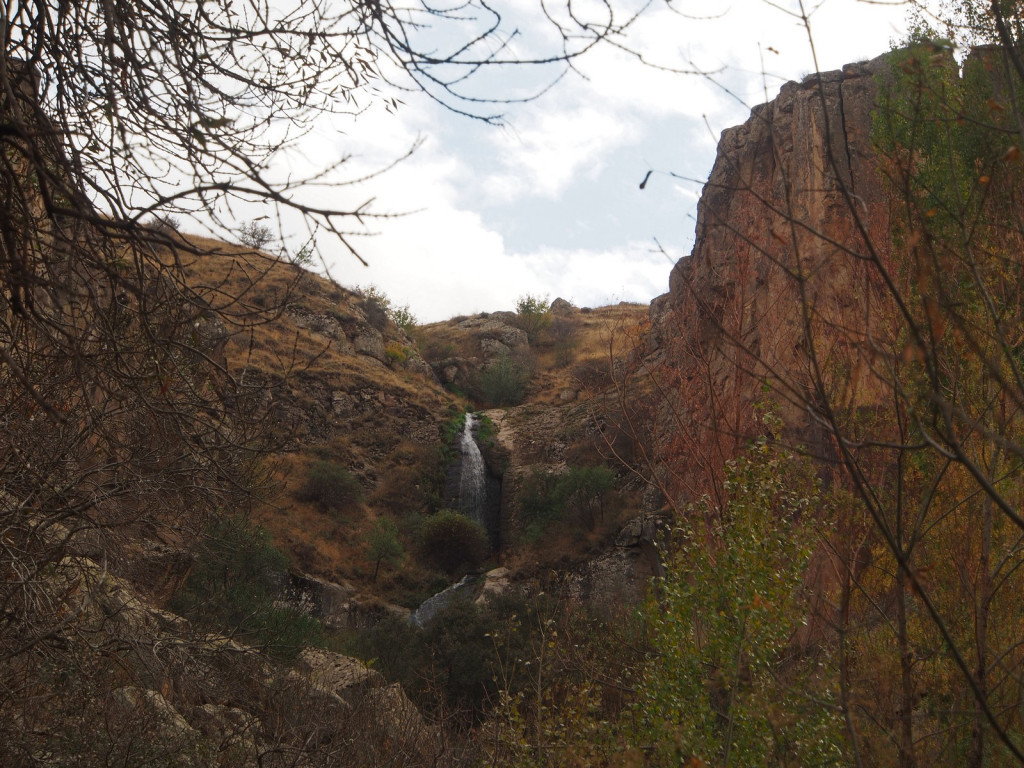
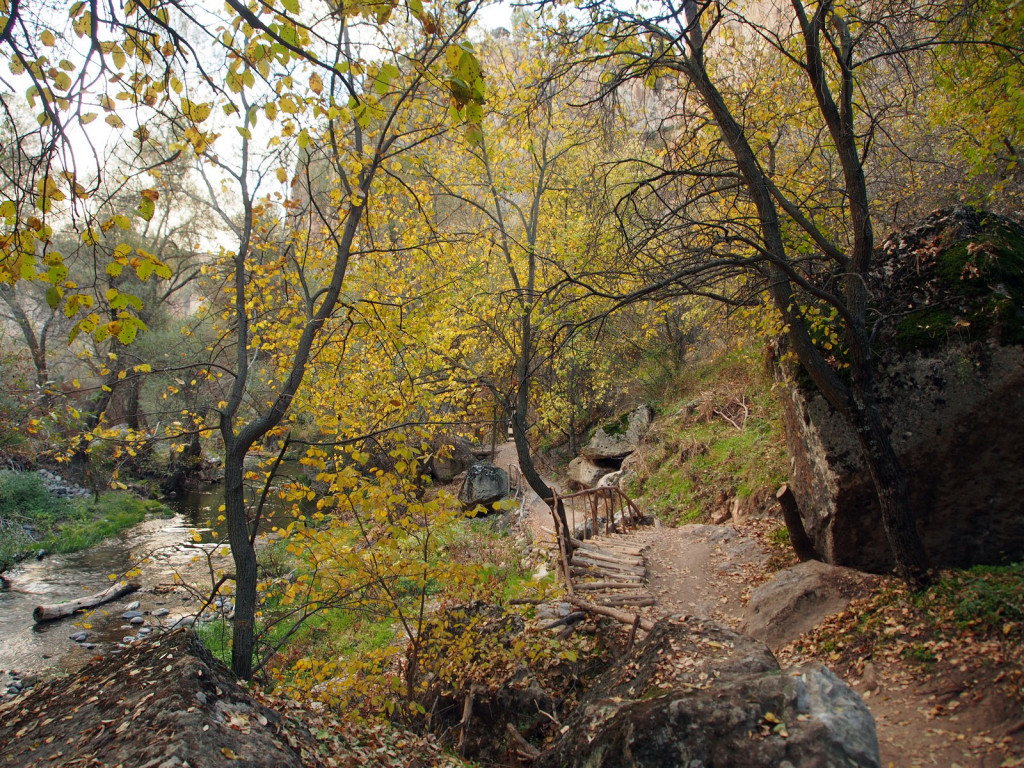
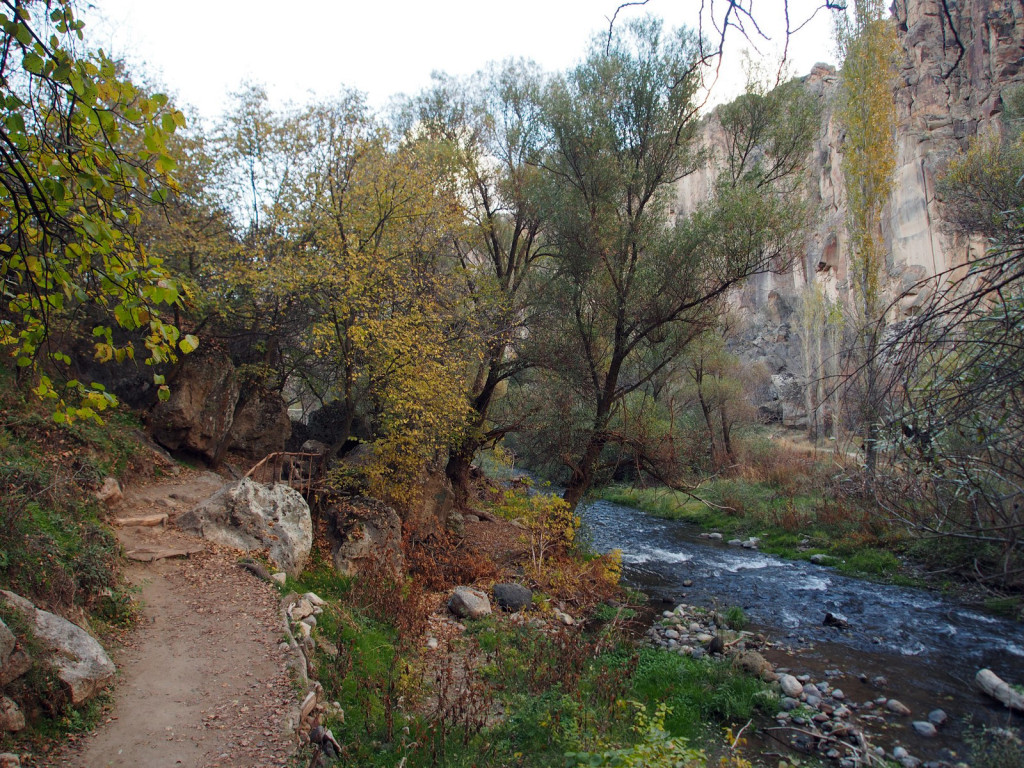
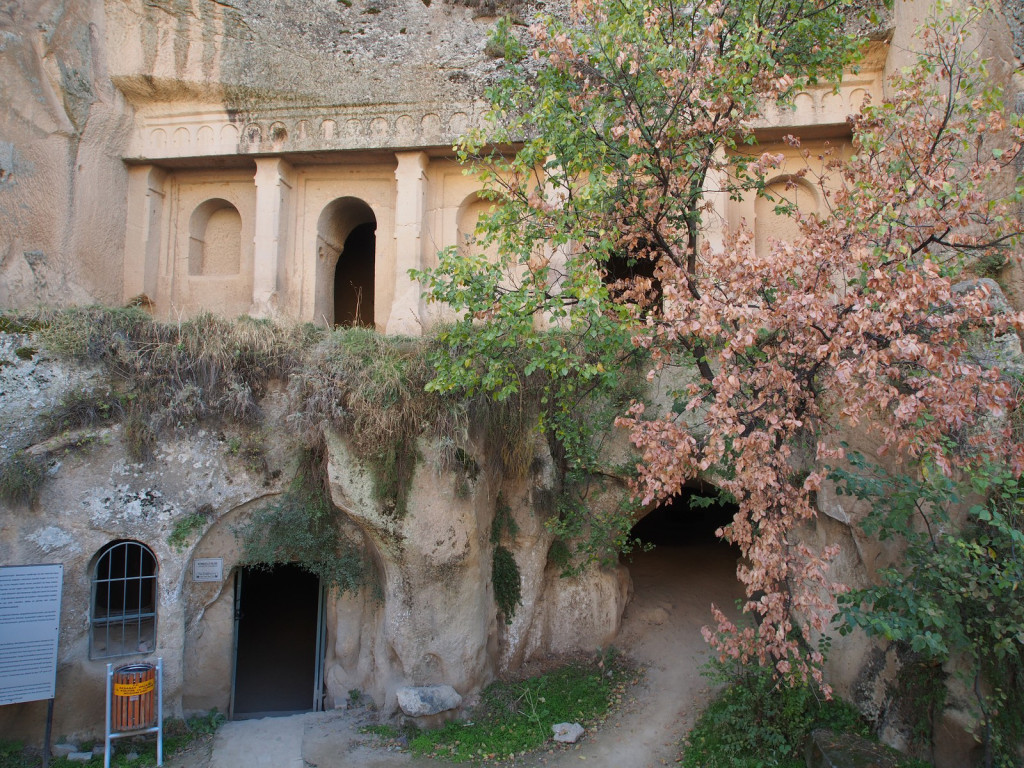
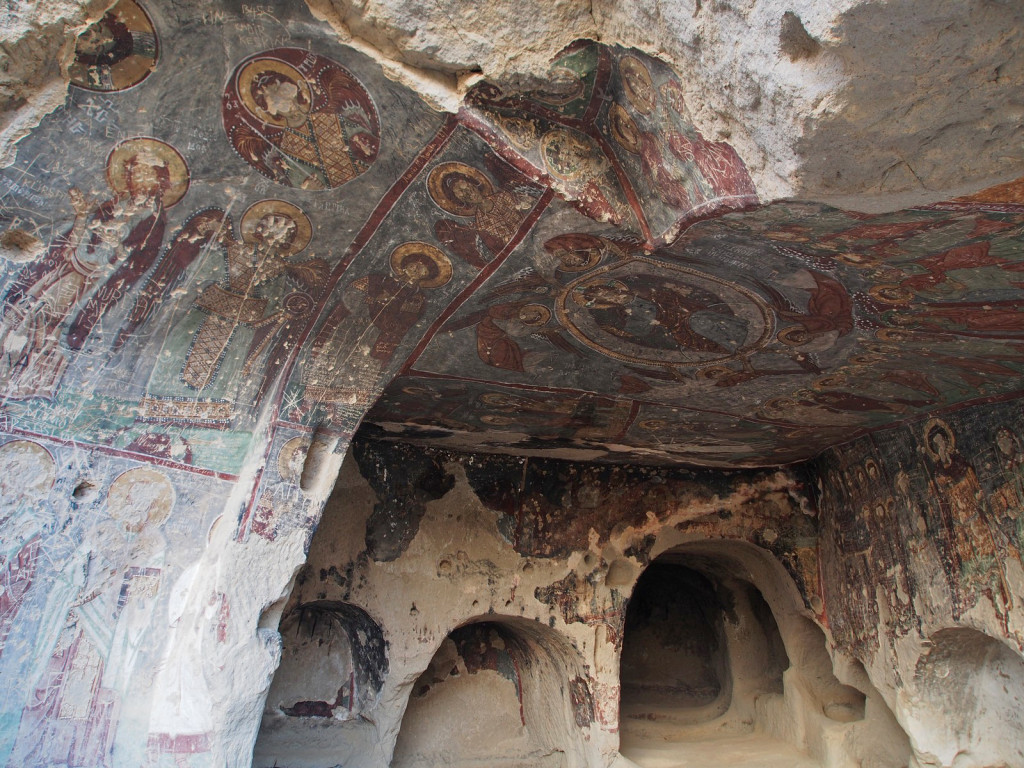
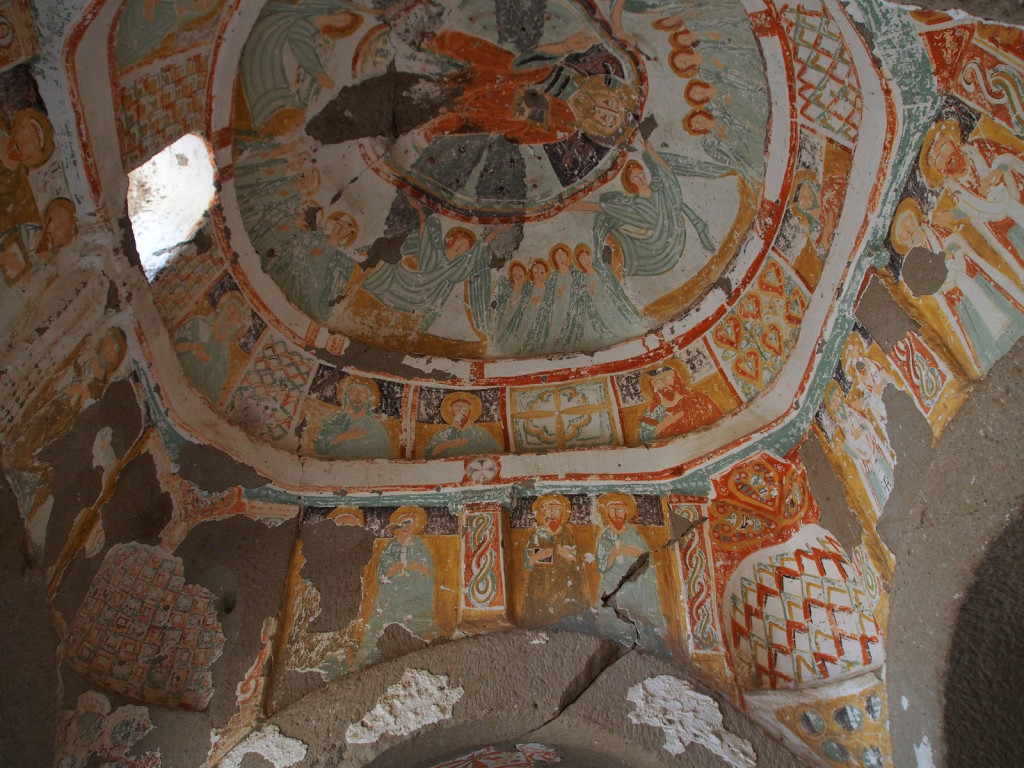
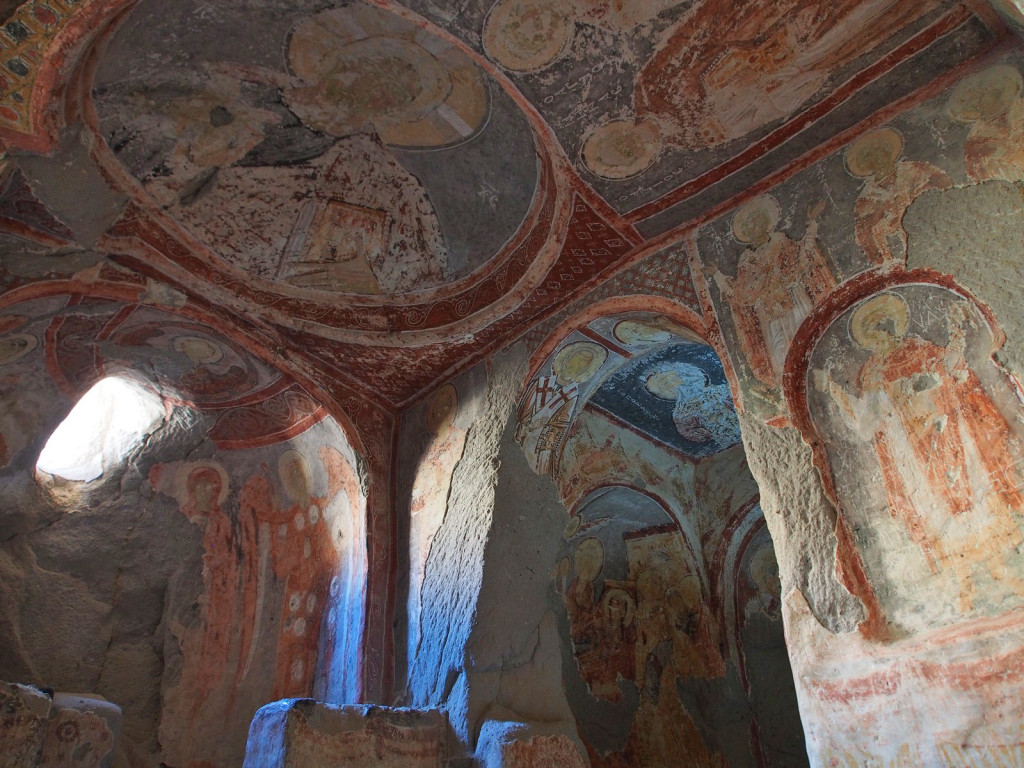
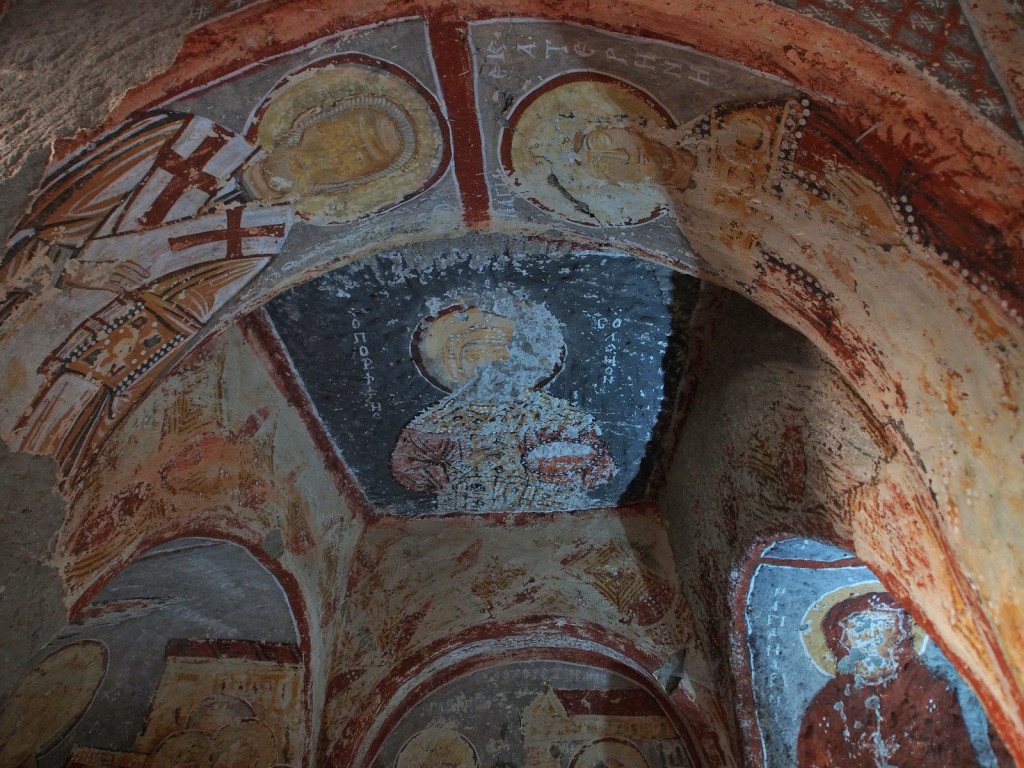
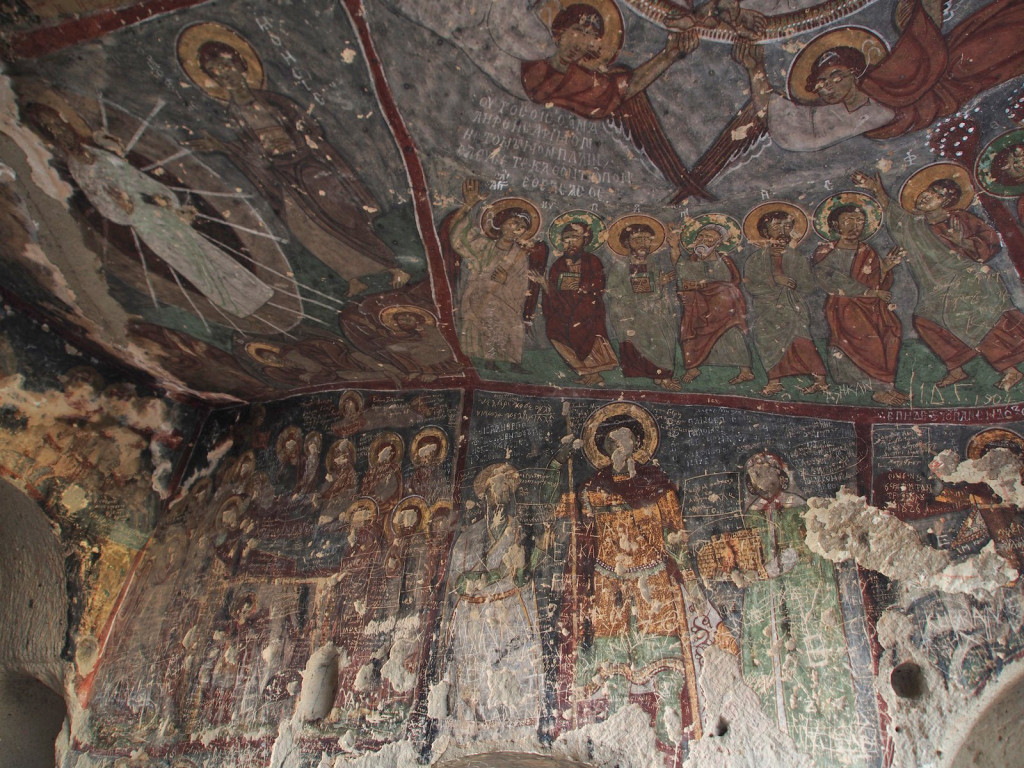

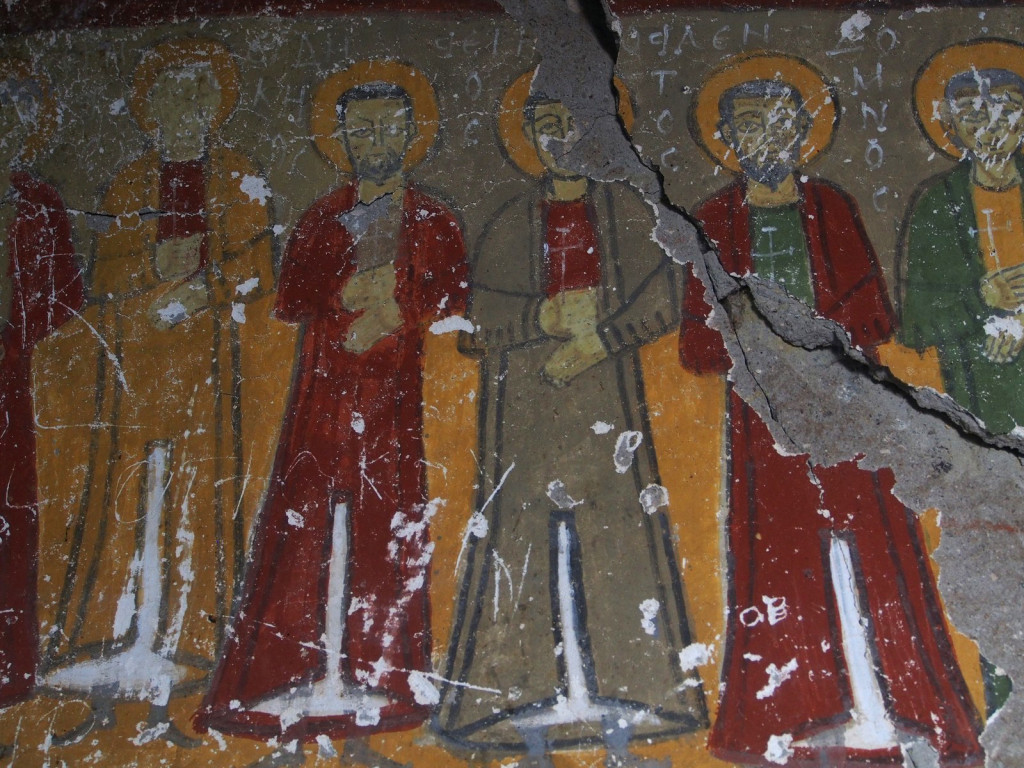
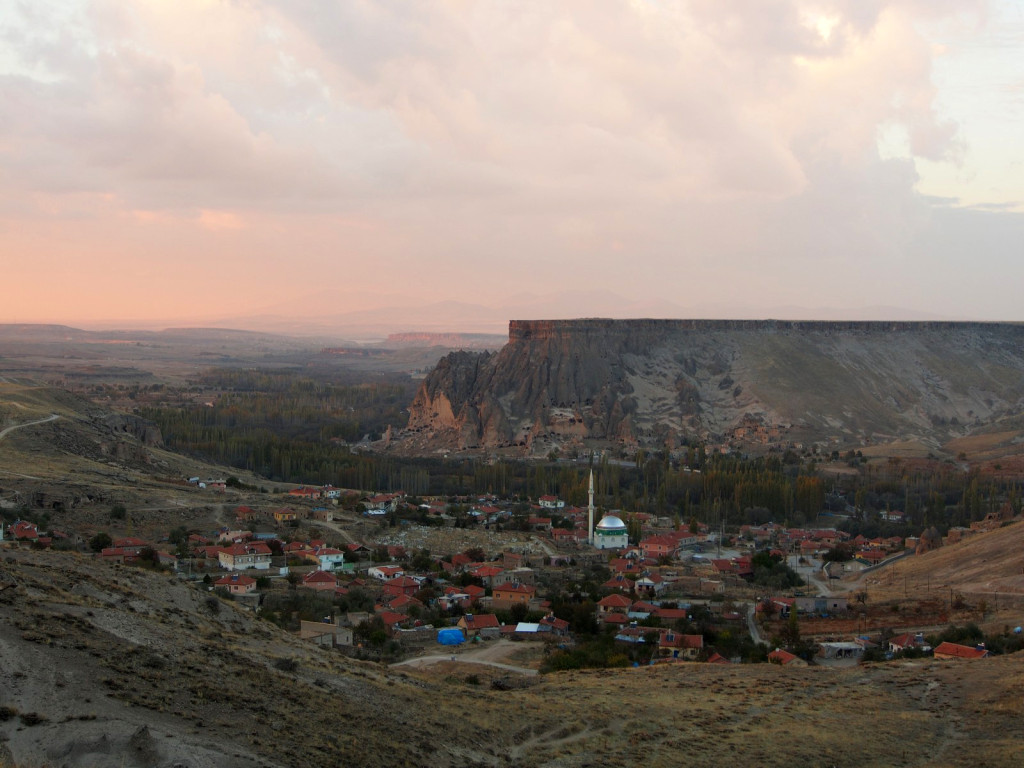
Fabulous blog – wish we were there too. And nice to see some photos of you two again.
What an awesome experience. thanks for sharing.
Hi, congratulations for this High Quality Travel Blog. I am impressed. I quickly went thru many pages and will be back for a closer look. Great pictures and good and short text are showing that you were travelling with wide open eyes. Knowing many places you have seen from my own traveling (Switzerland-Kabul in 1974, Middle East Trucking in the 80ies, Tajikistan in 2002/03/15) it’s exiting to read and look at your pictures!
Thanks for sharing.